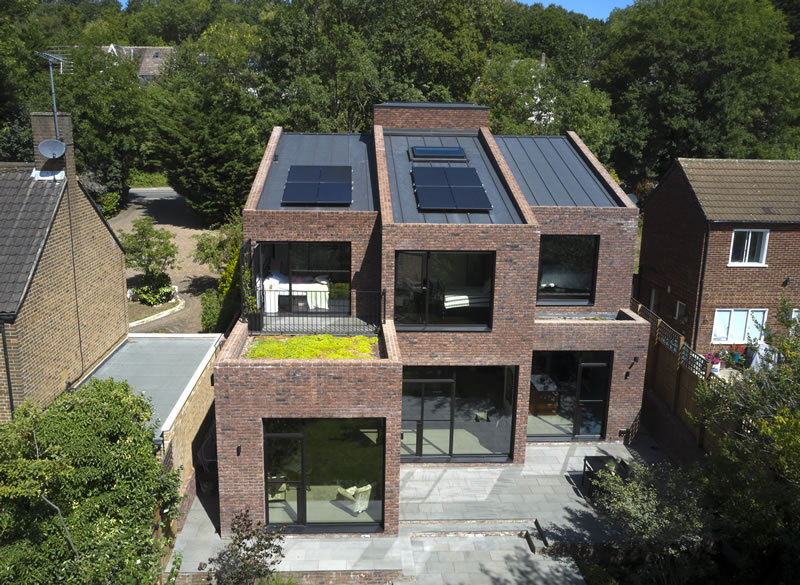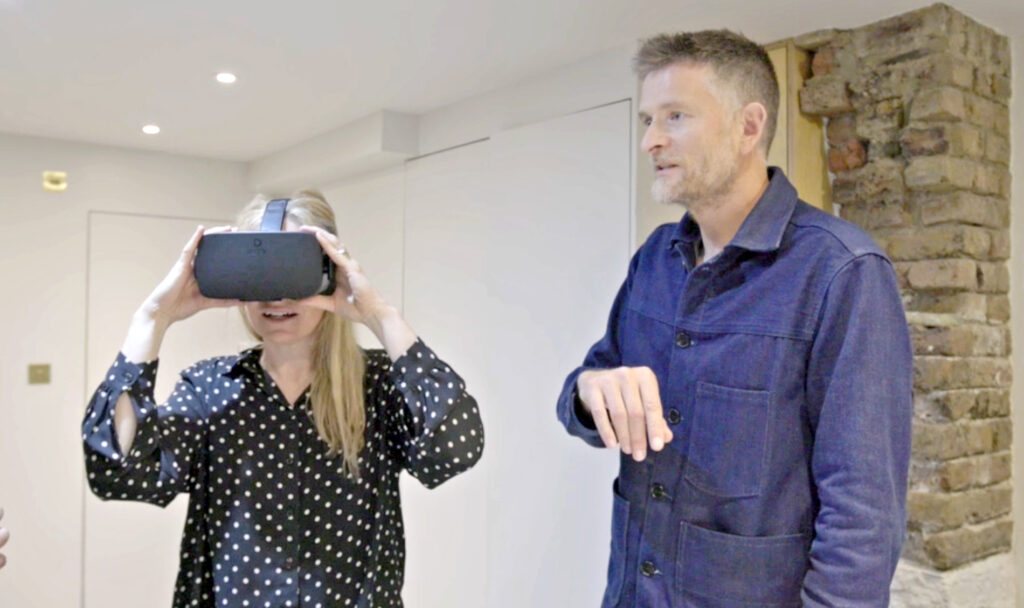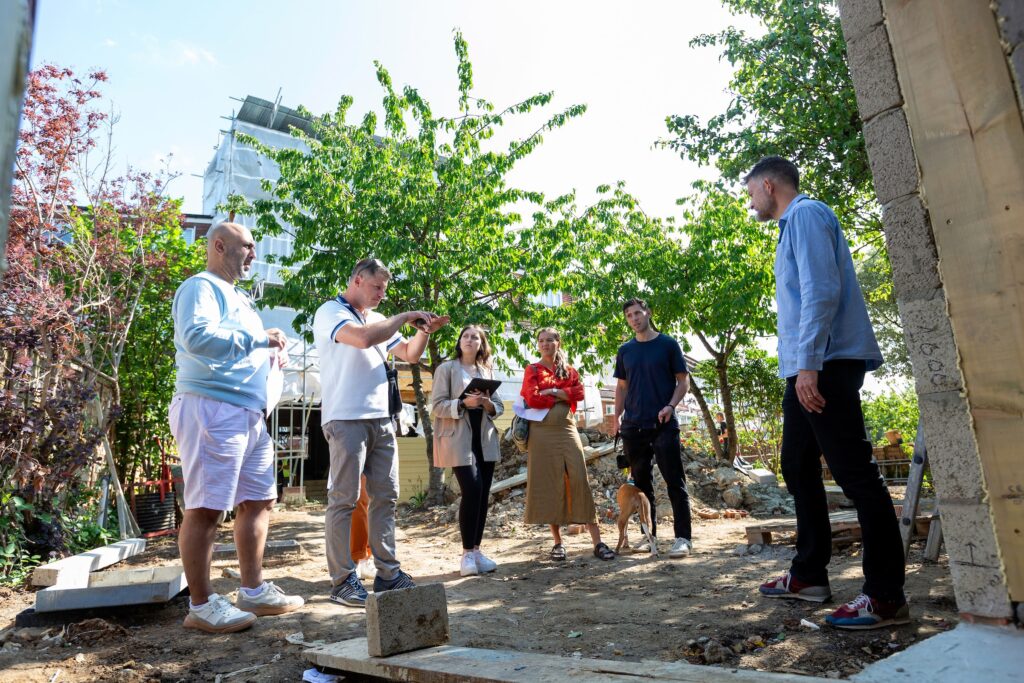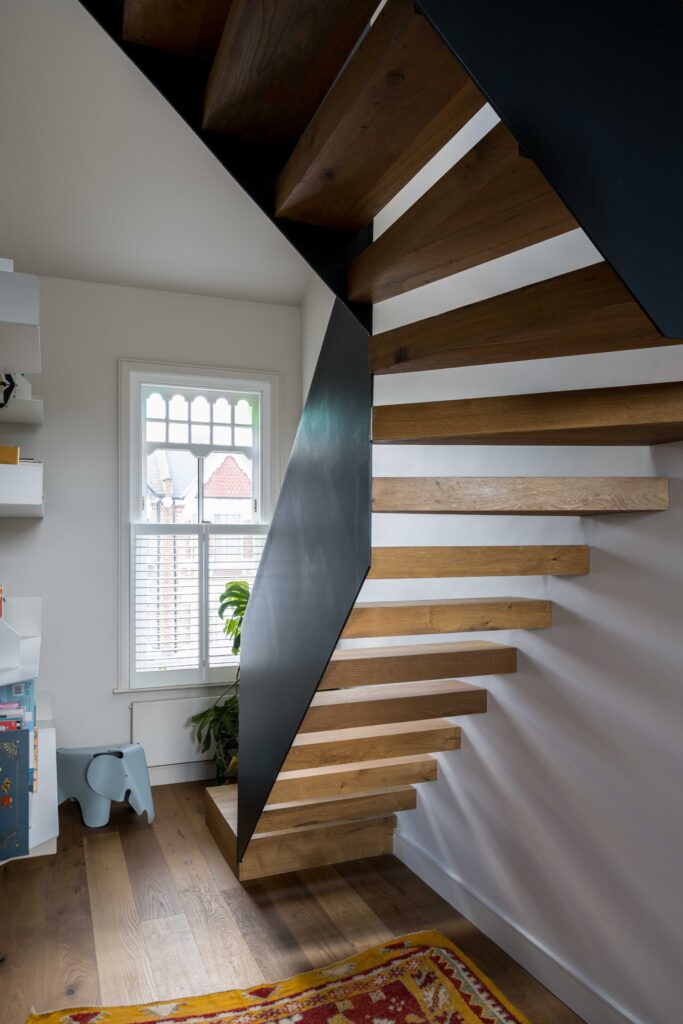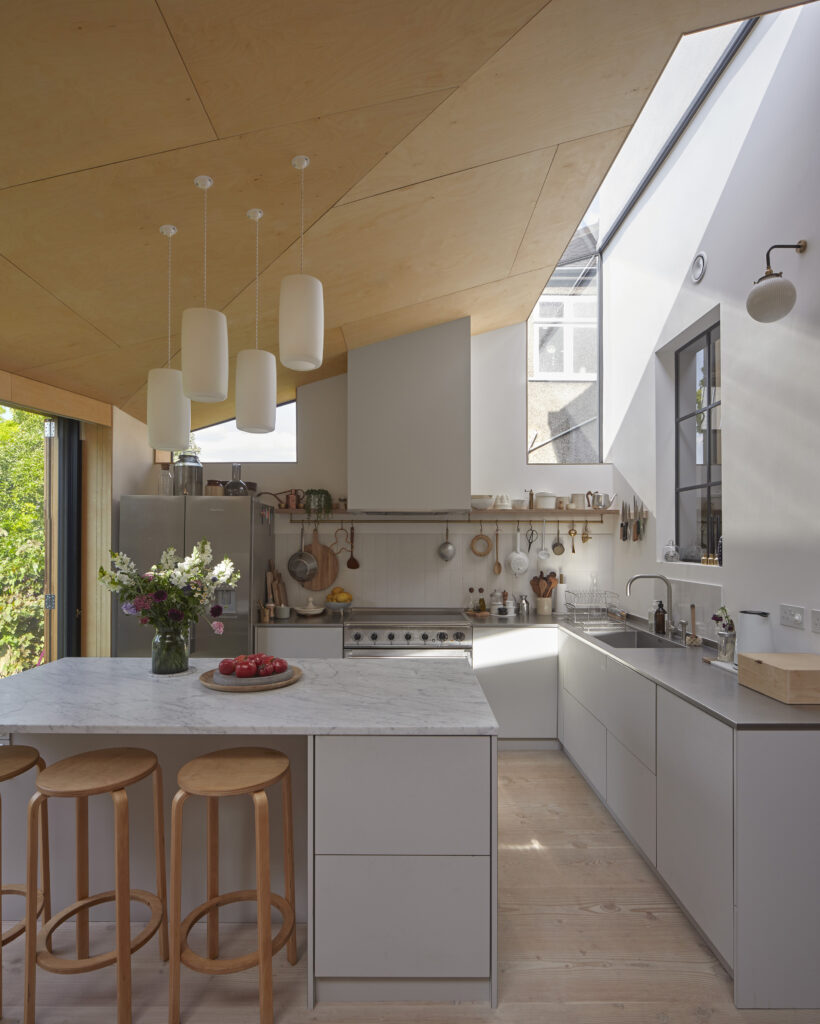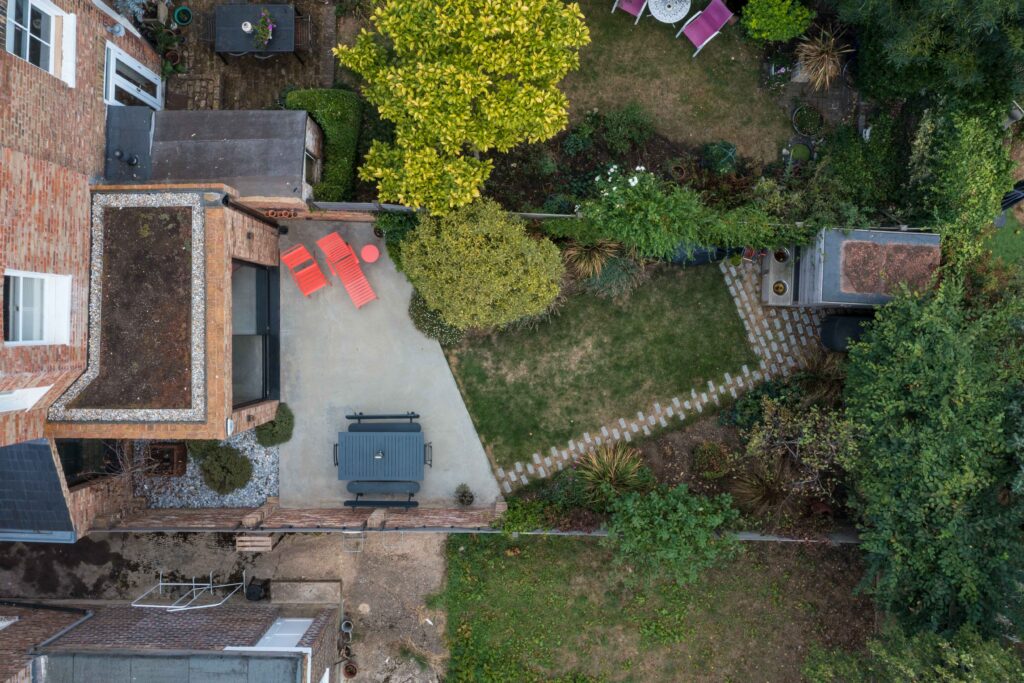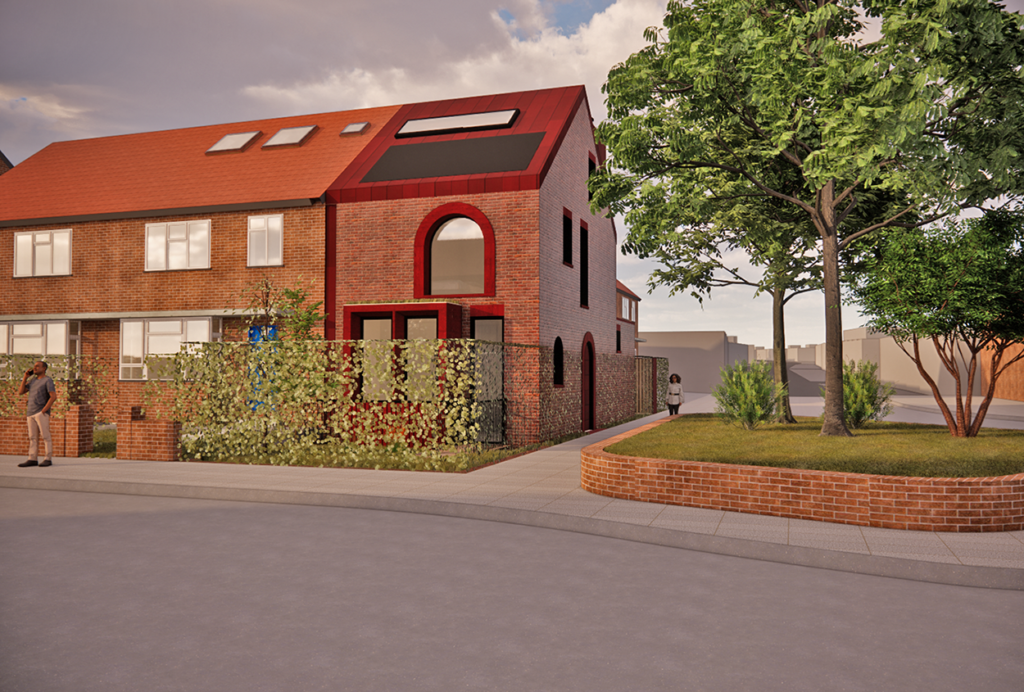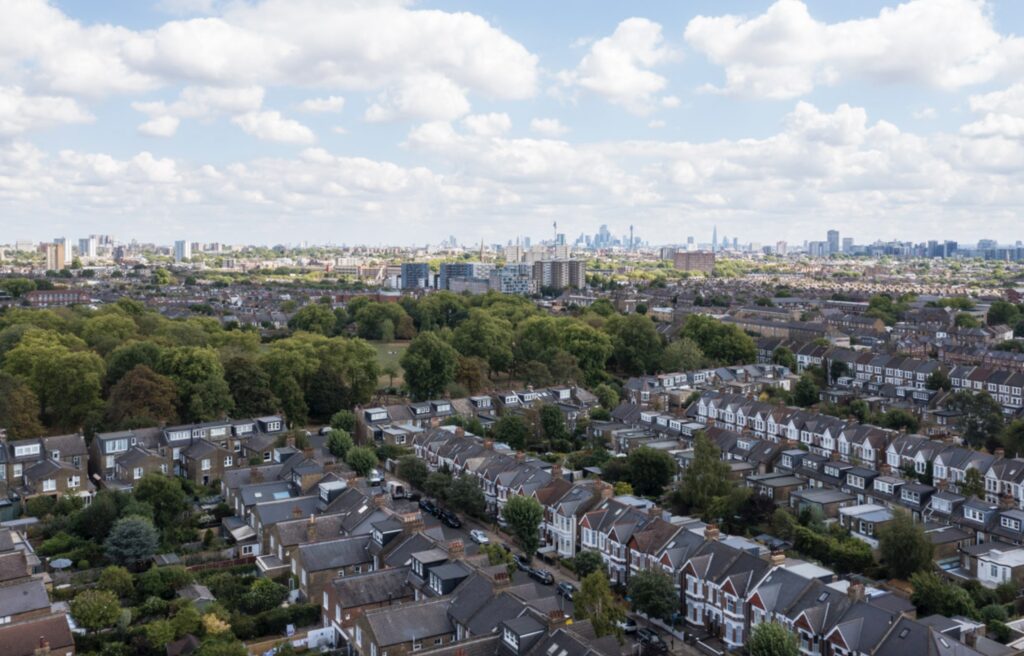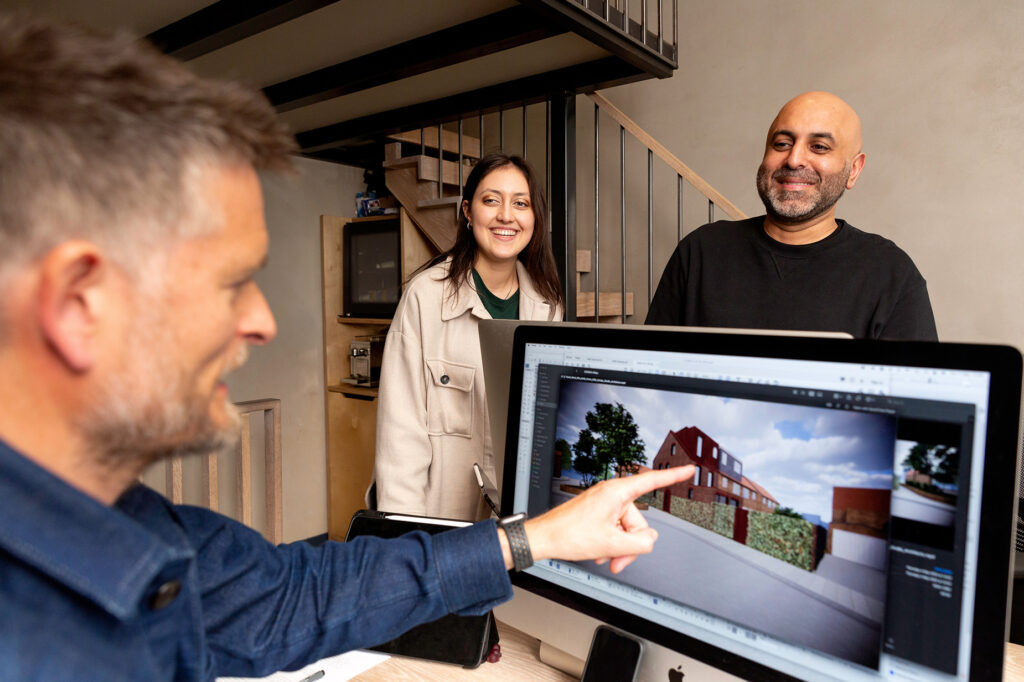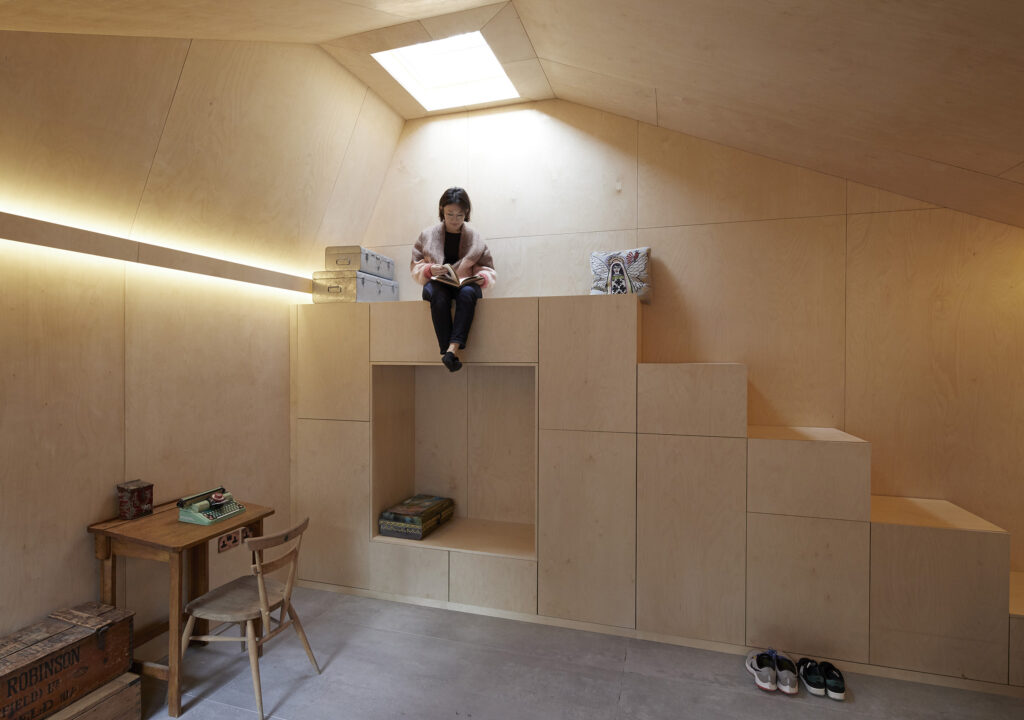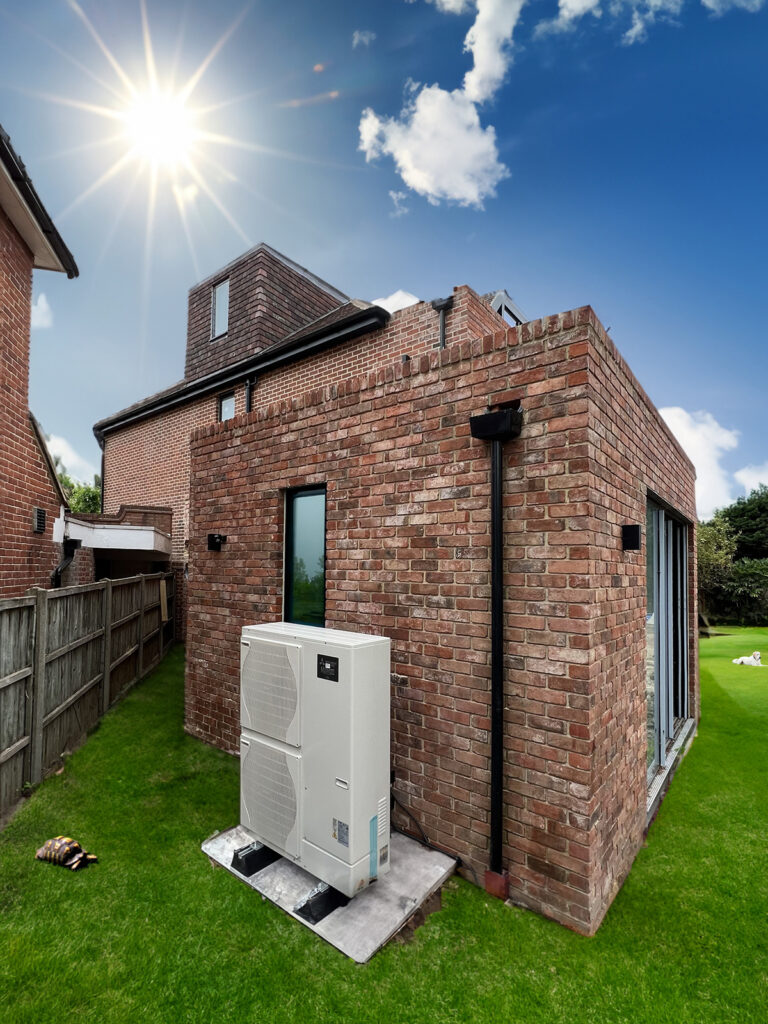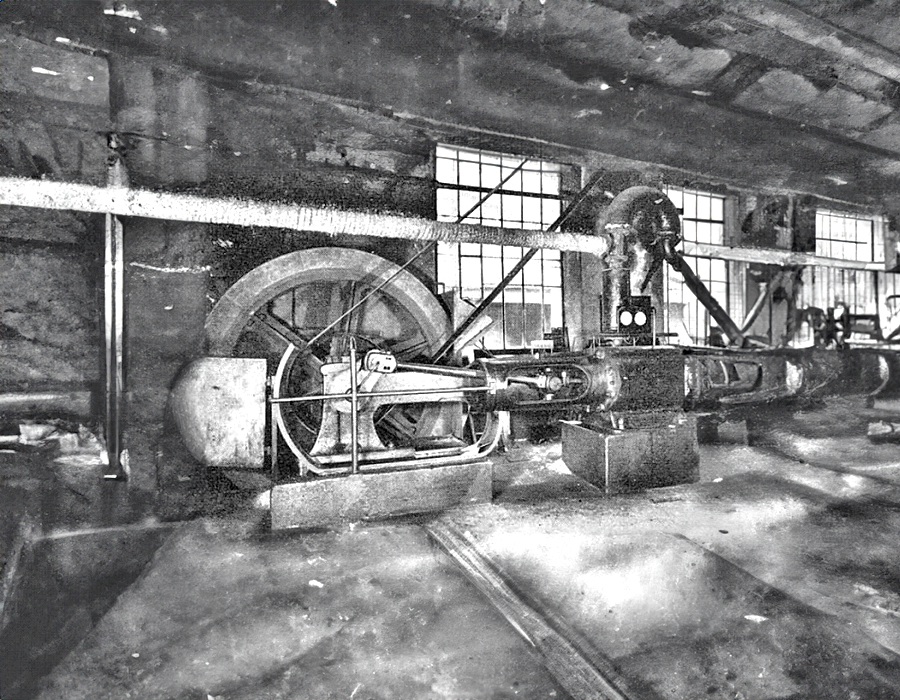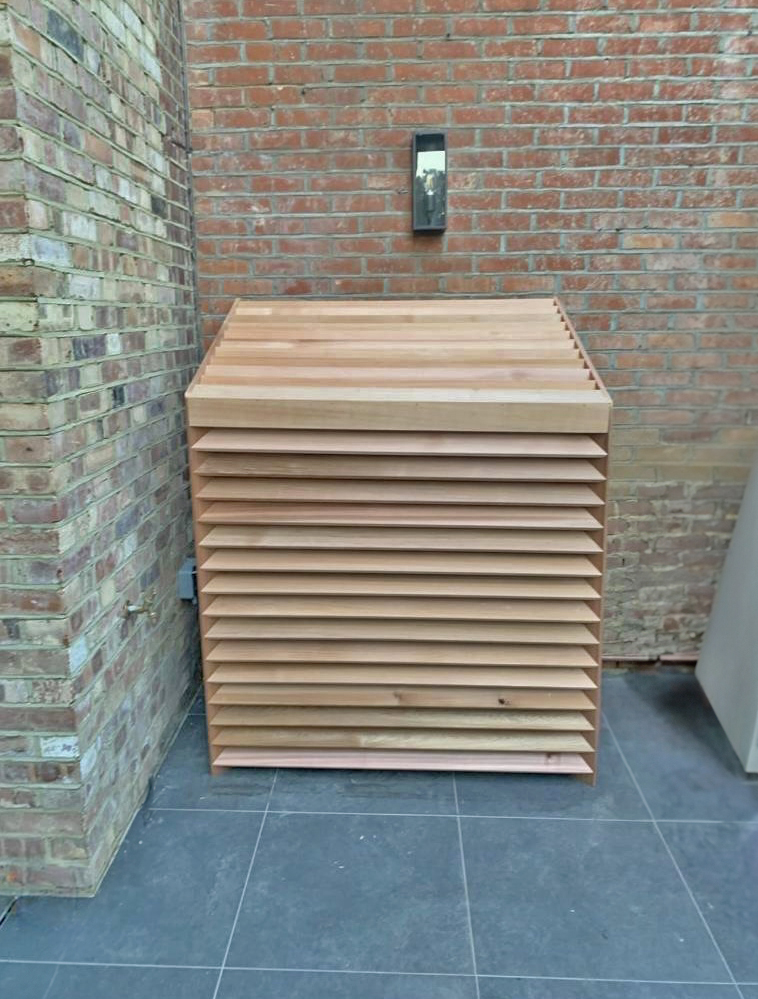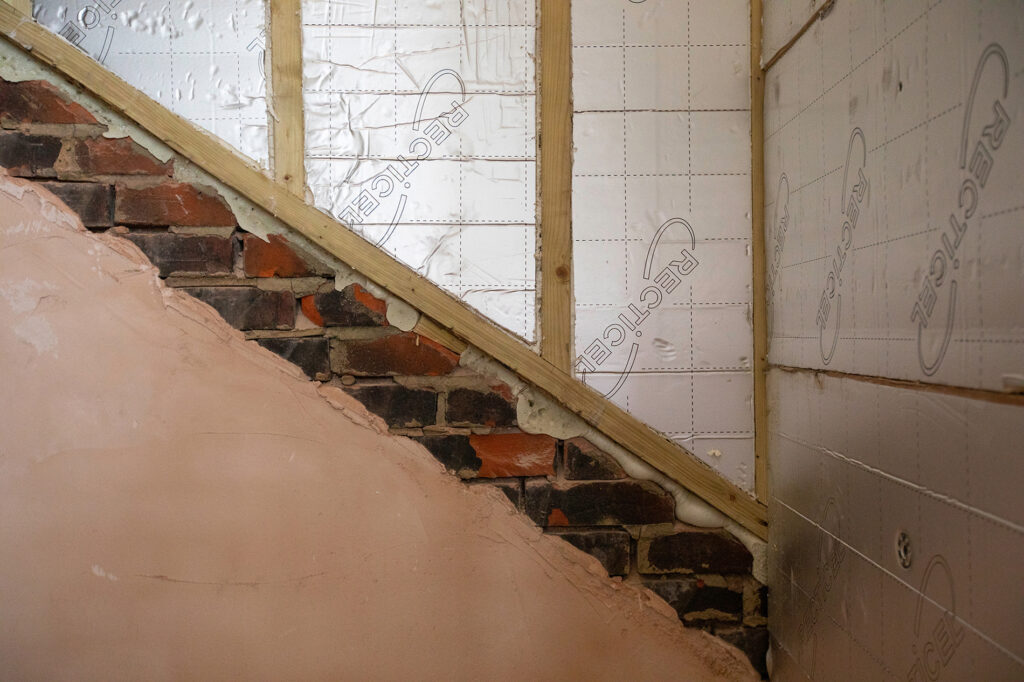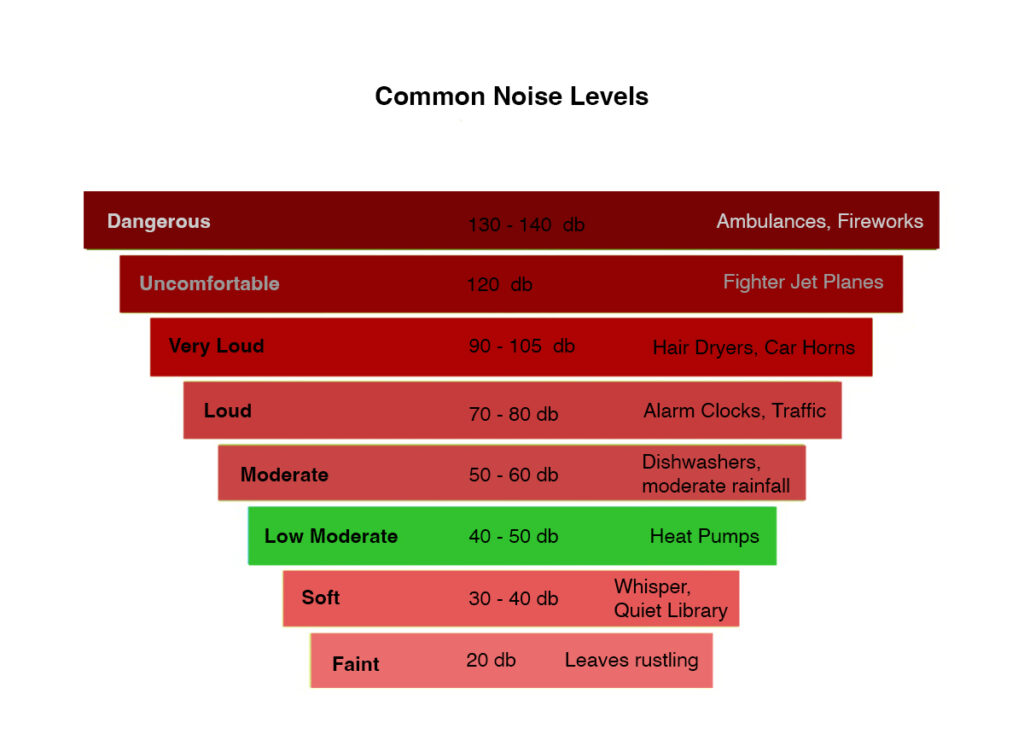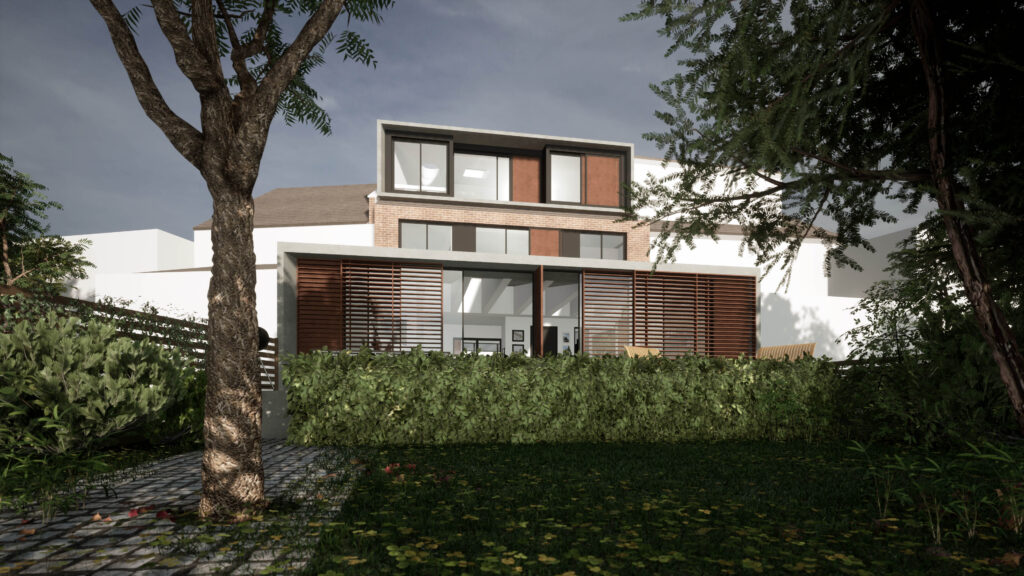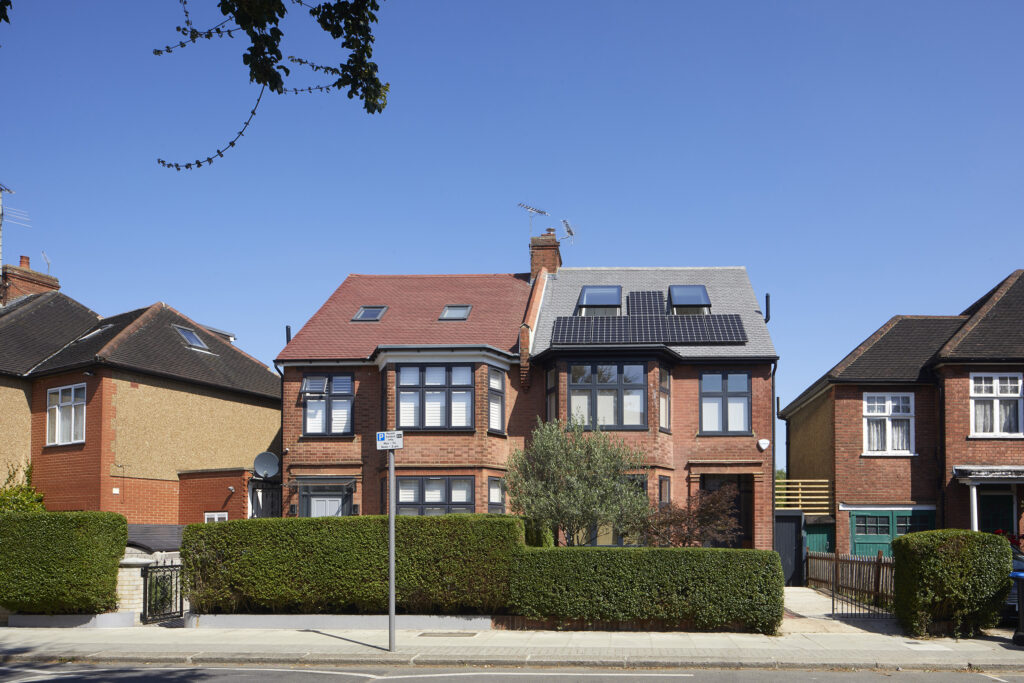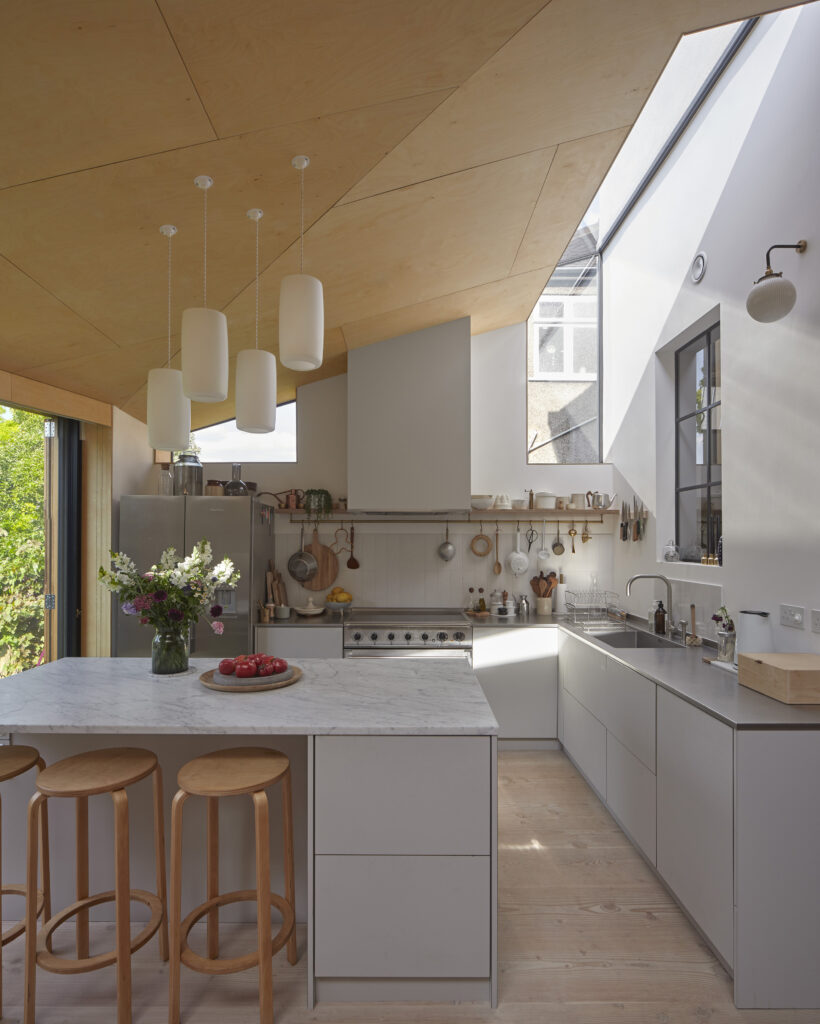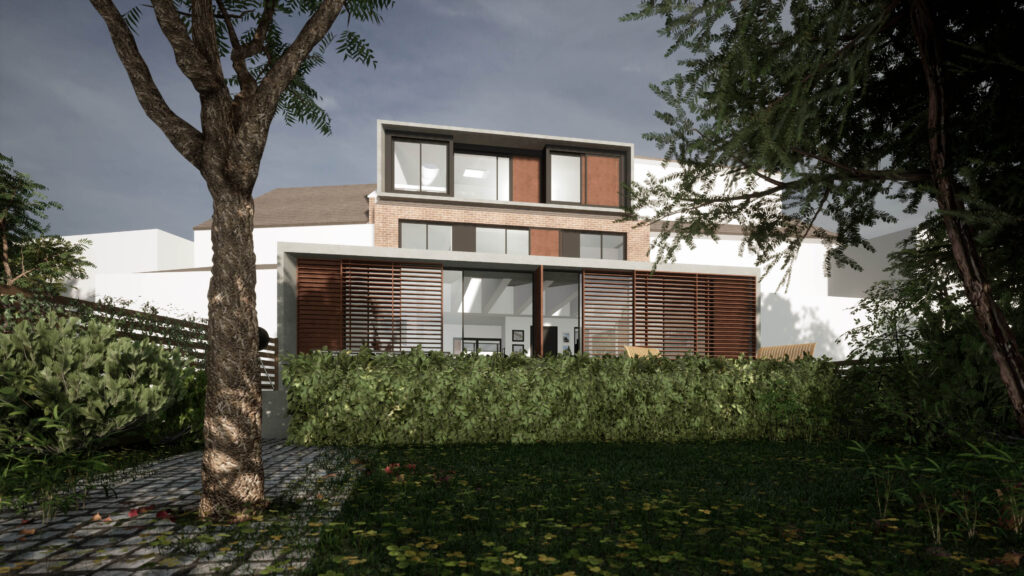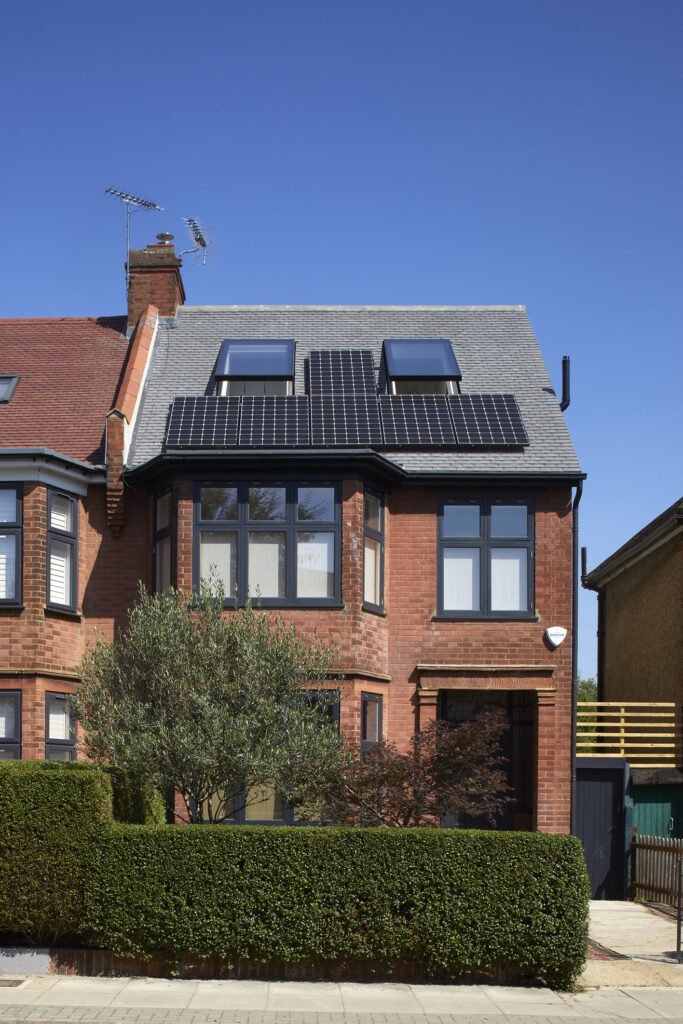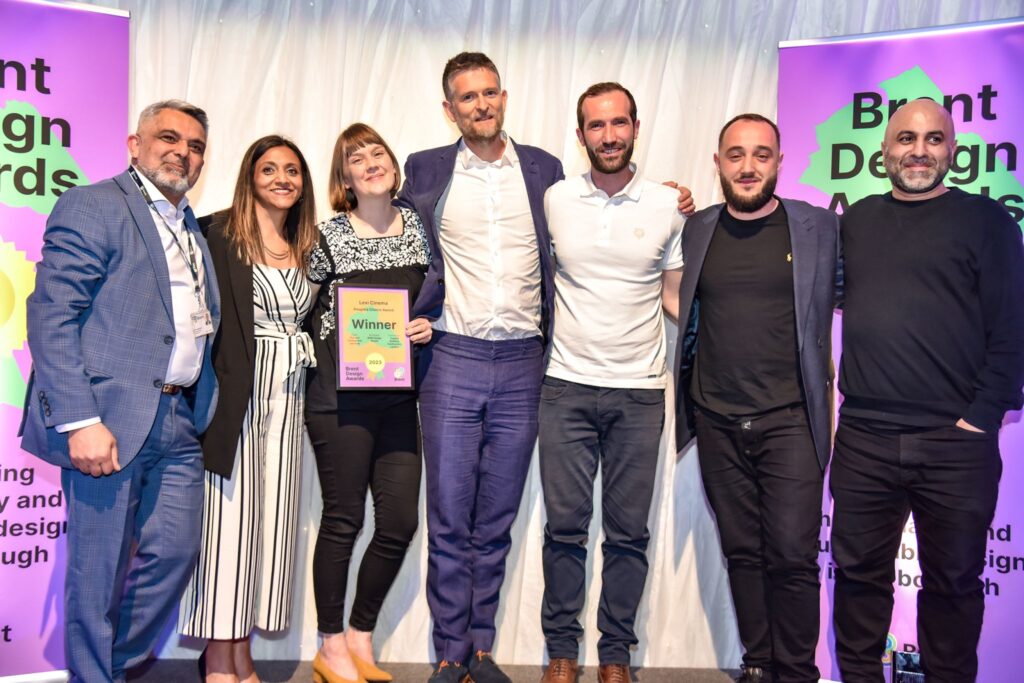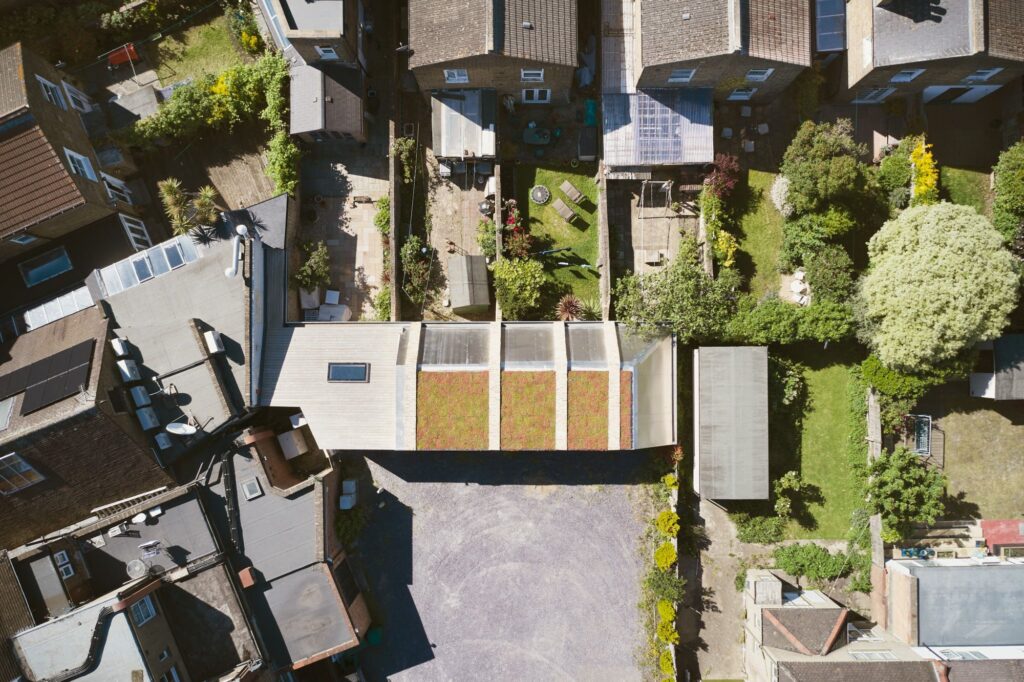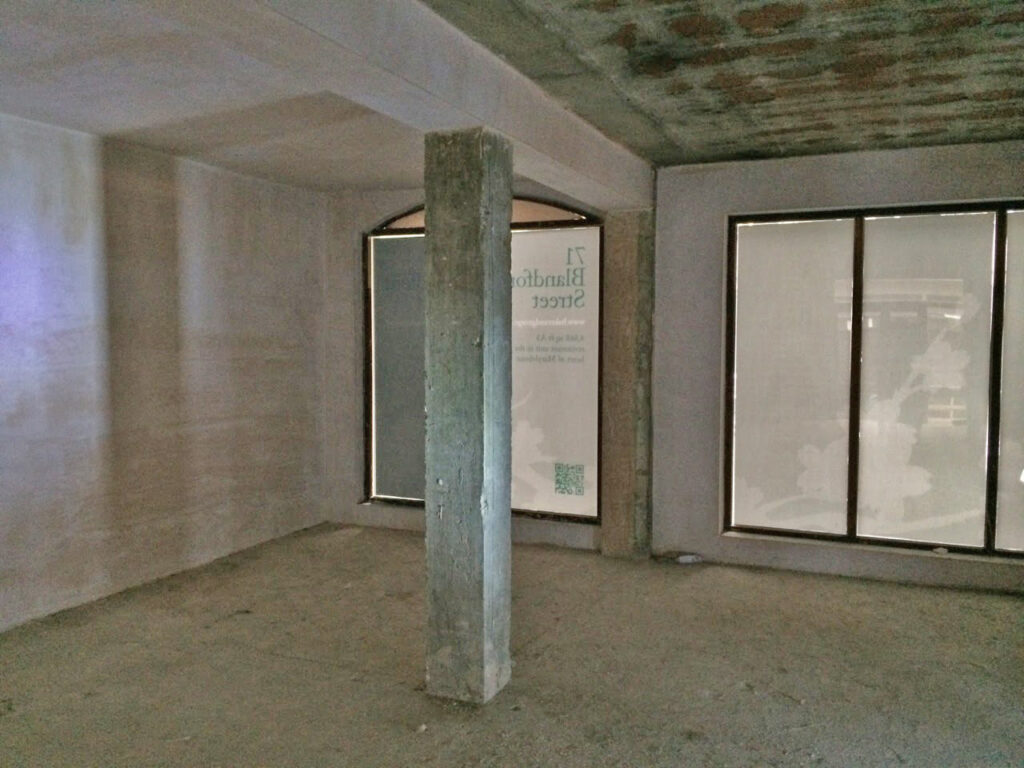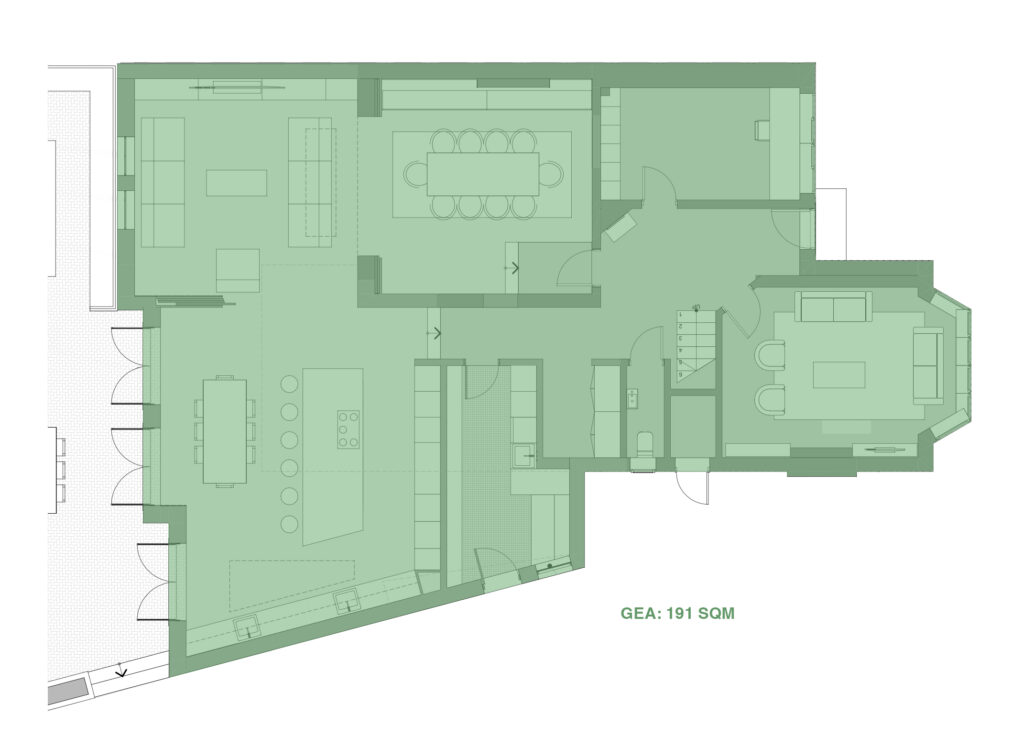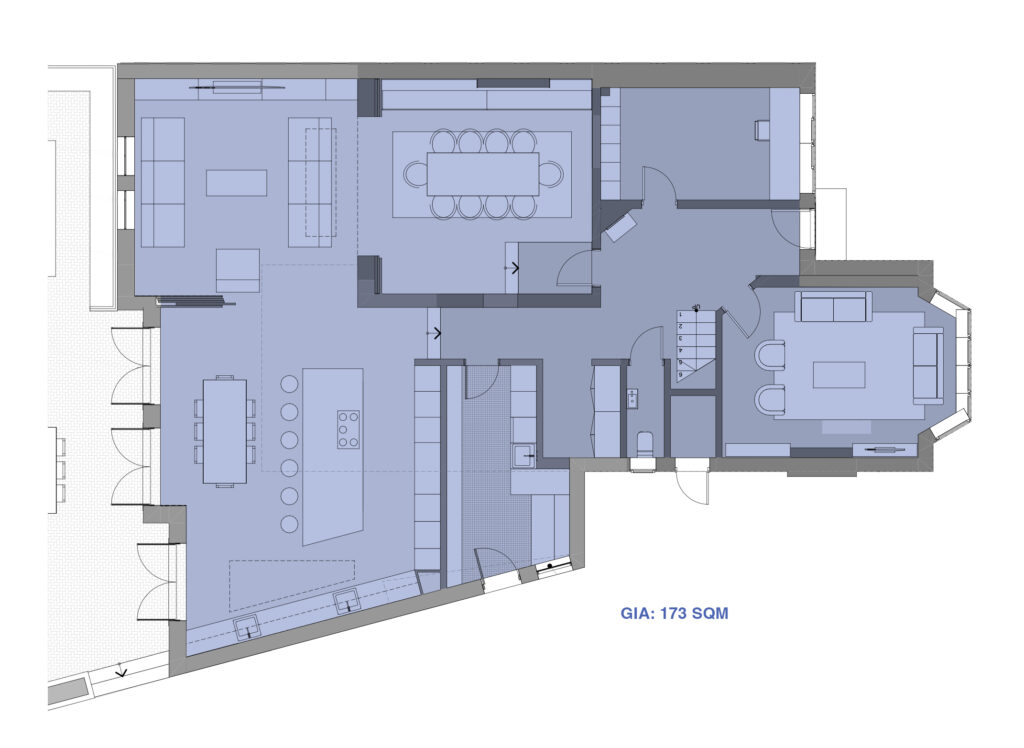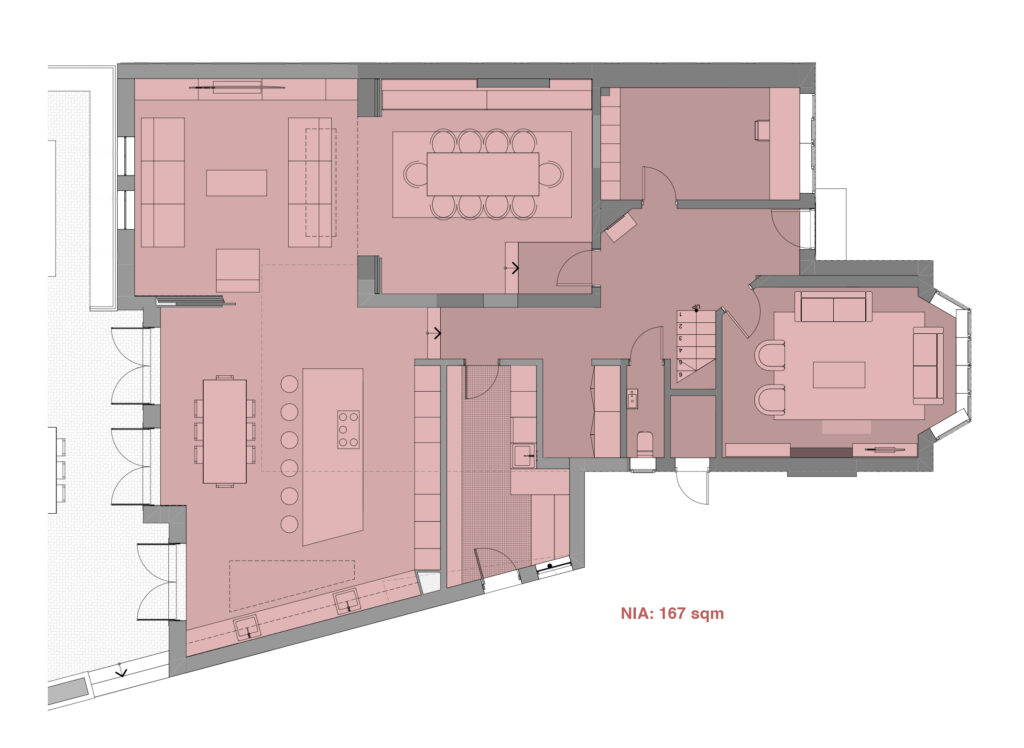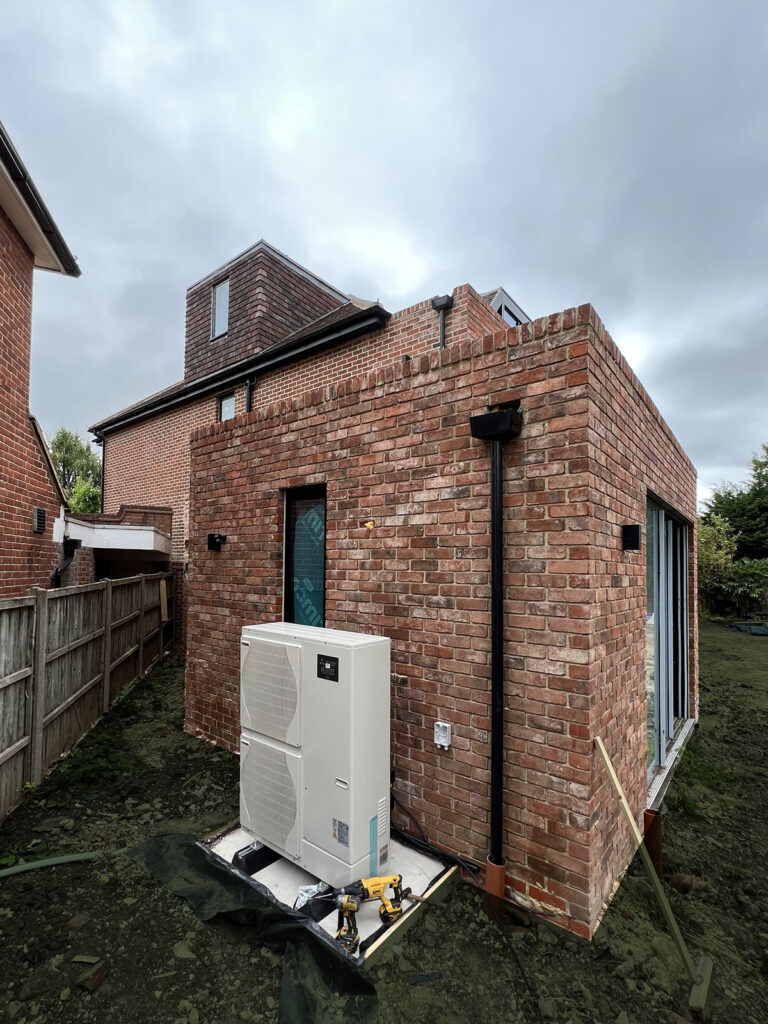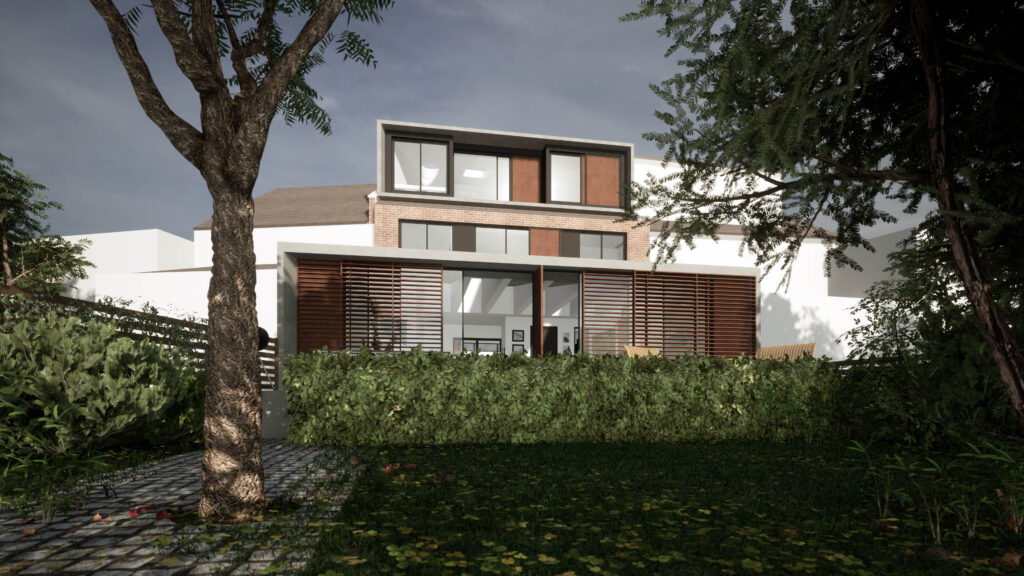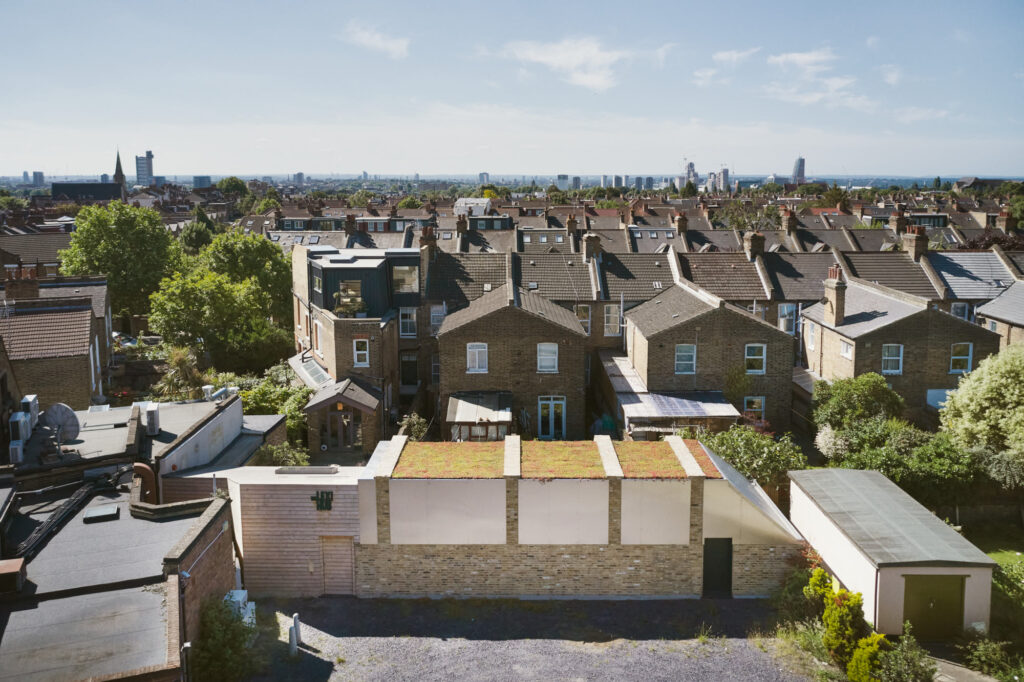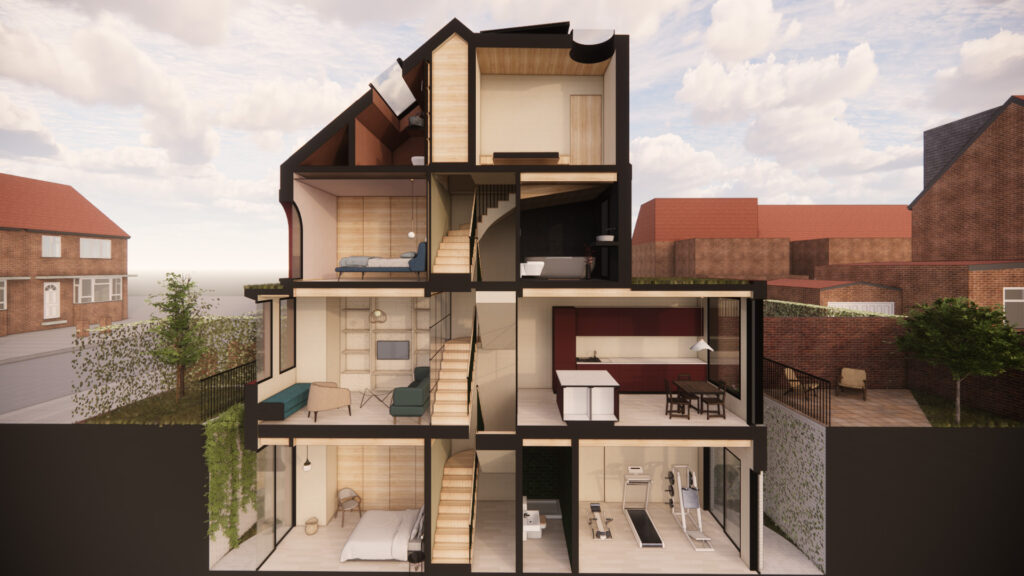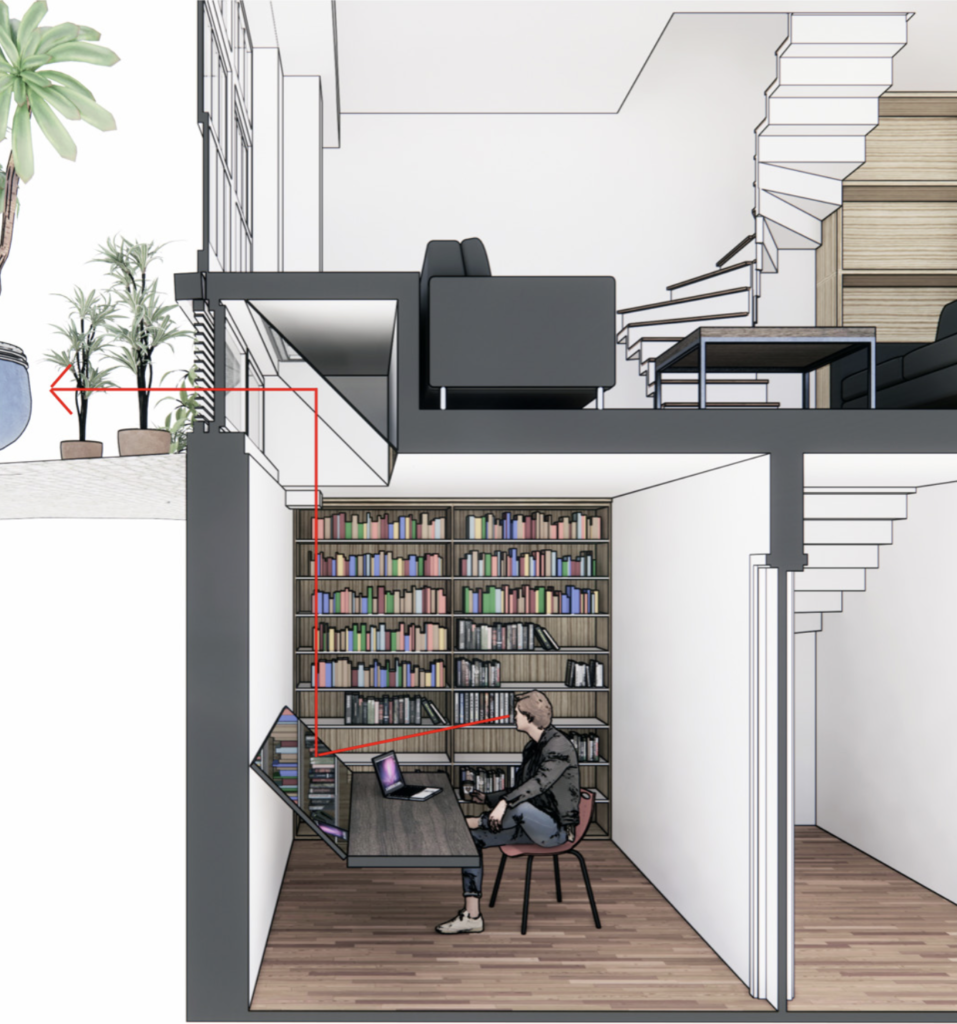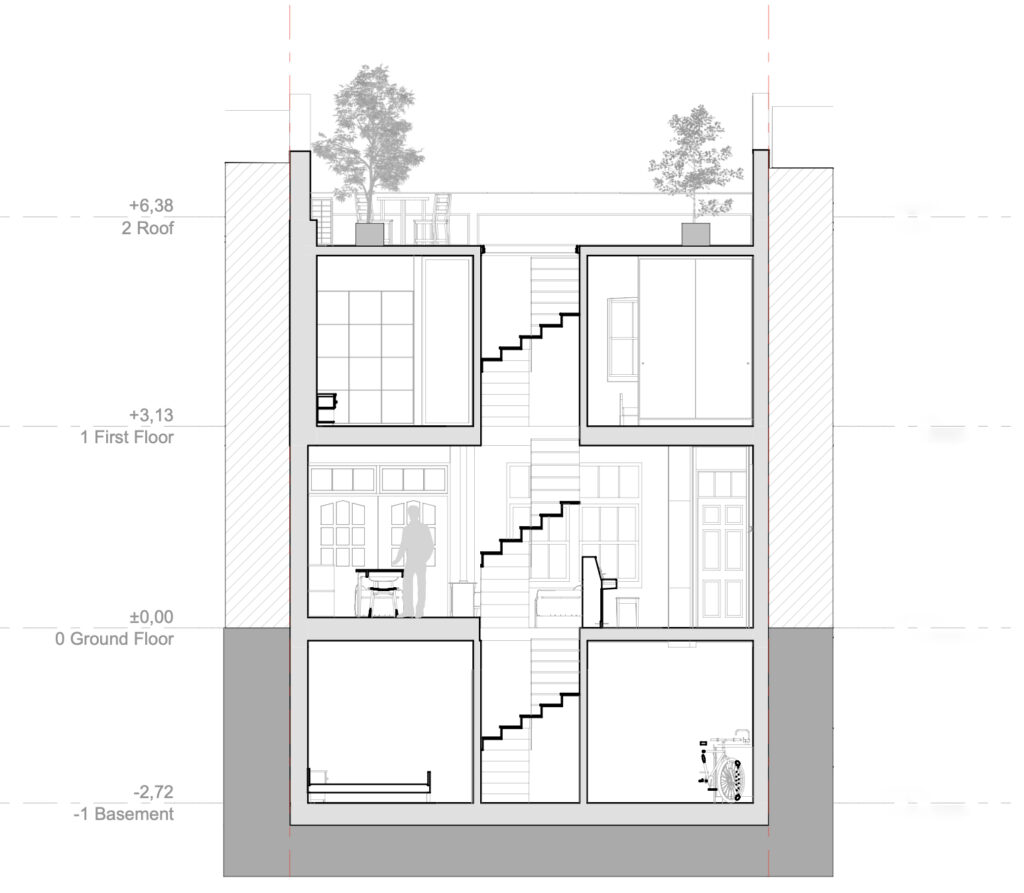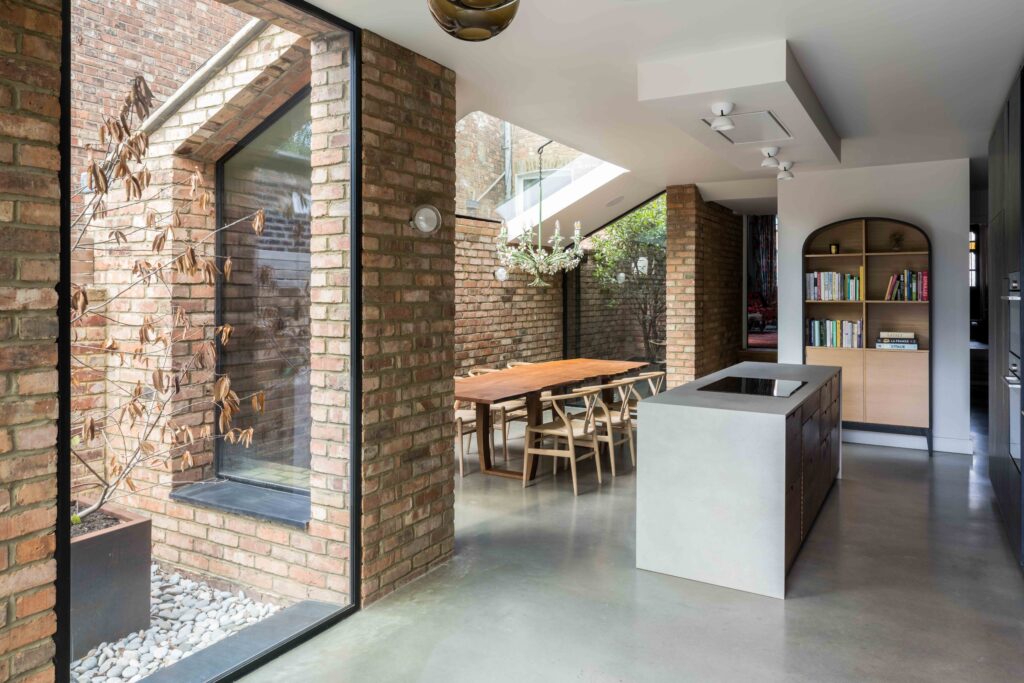London, with its enduring heritage and centuries of history, stands as a testament to the architectural excellence of past epochs. It boasts an extensive range of architectural styles, but perhaps none as iconic or as deeply woven into the city’s fabric as Victorian architecture. Wandering through neighbourhoods like Chelsea, with its quaint terraces, or exploring the leafy avenues of Hampstead where sprawling semi-detached houses dominate the landscape, one is immediately reminded of a time of grandeur and detail. These structures, with their ornate facades, high ceilings, and intricate details, echo tales of a period defined by industrial growth and a keen sense of aesthetics.
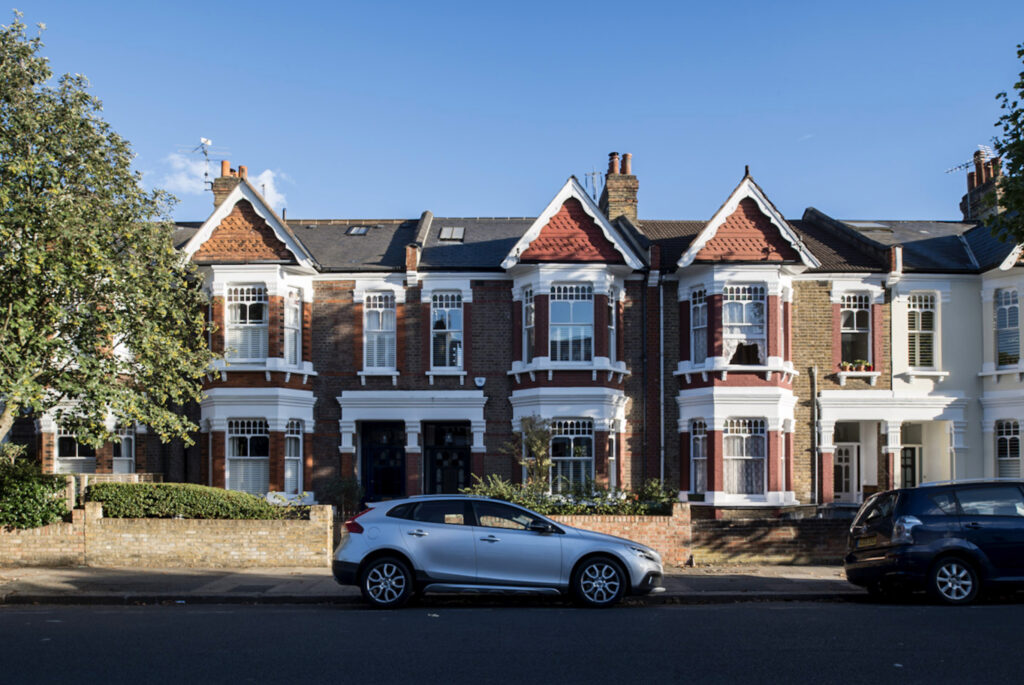
However, as captivating as Victorian homes may be, the demands of 21st-century living often pose challenges to their age-old designs. While these houses exude a certain allure, their internal spaces – originally crafted for different lifestyles – can sometimes feel restrictive by today’s standards. The modern family often desires open-plan living, more natural light, or simply more space, and these requirements can be at odds with the original Victorian layout.
This is where the art of the extension comes into play. Extensions not only offer homeowners the chance to tailor their homes to their needs, but they also provide an opportunity to marry the old with the new and to blend history with modernity. The goal is not just to add space, but to do so in a manner that respects the original architecture while seamlessly connecting it with contemporary design principles.
Moreover, with the growing emphasis on sustainability, there’s an increasing need to ensure that these extensions are energy-efficient and have minimal carbon footprints. The challenge then becomes twofold: to maintain the architectural sanctity of these historic buildings, while simultaneously ensuring they adhere to the highest standards of environmental sustainability.
Thus, the delicate balance of integrating the contemporary with the classic becomes paramount. For any homeowner or architect venturing into the domain of Victorian home extensions, it is a dance of reverence to the past and a nod to the future, ensuring that history and modernity coexist in harmony.
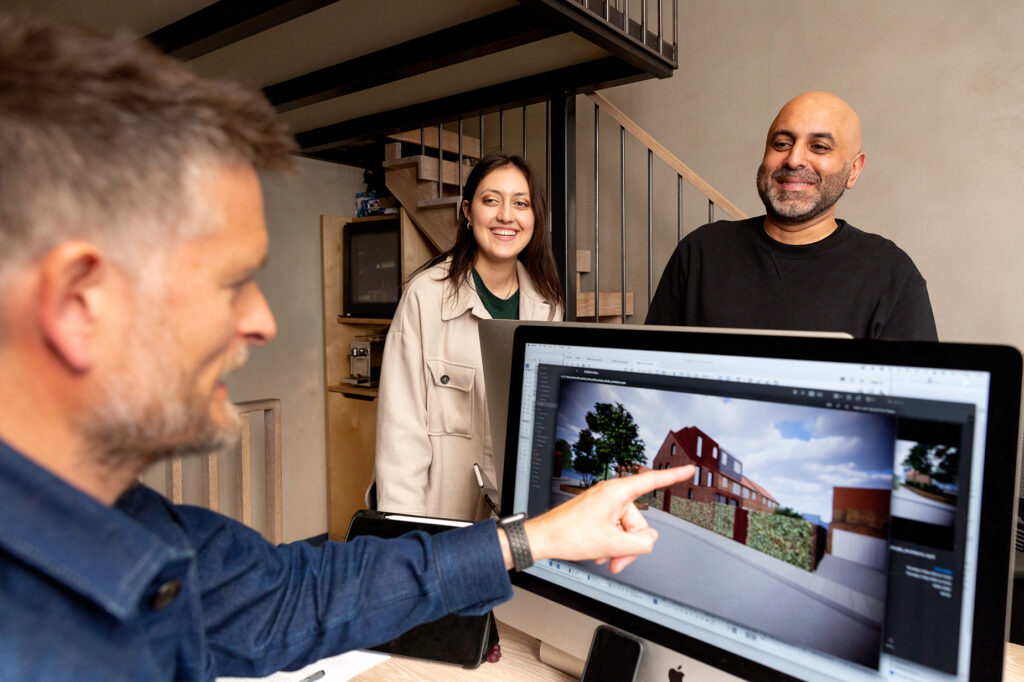
1. The Merits of Hiring a Professional Architect:
In our contemporary era, the allure of the ‘Do It Yourself’ approach has steadily gained traction. With a multitude of online resources and television programmes showcasing transformative projects, many homeowners might be tempted to embark on architectural endeavours without professional intervention. However, navigating the complexities of design and construction isn’t merely about having a vision; it demands expertise, intricate knowledge, and a meticulous approach. Herein lies the irrefutable value of engaging a professional architect.
- Safeguarding Your Investment:
- Home is often the most significant investment one makes in a lifetime. Thus, ensuring its value is paramount. Poor or amateur building work doesn’t just detract from the aesthetic appeal but can severely diminish the property’s market value. An experienced architect ensures that every design decision not only enhances the home’s beauty but also boosts its overall worth.
- Mitigating Costly Mistakes:
- The construction process is fraught with potential pitfalls. An error in the planning or execution stage can lead to extensive renovations or adjustments down the line, resulting in skyrocketing expenses. A professional architect possesses the foresight to anticipate and mitigate such issues, ensuring that the project stays true to budget and avoids unforeseen expenditures.
- Realising the Vision:
- Every homeowner carries a unique vision for their space. An architectural studio, especially one with a rich portfolio like ours, understands the intricacies of translating this vision into tangible reality. By liaising closely with the client, an architect ensures that the final output aligns seamlessly with the client’s aspirations, balancing both aesthetics and functionality.
- Advocating for Sustainable Solutions:
- As global awareness about the environment intensifies, there’s a growing emphasis on green building practices. A knowledgeable architect is well-versed in sustainable design solutions and can guide homeowners in making choices that not only benefit their living space but also contribute positively to the planet. From recommending low-carbon materials to incorporating natural light optimally, a professional can transform your space into an eco-friendly haven.
- Navigating Regulatory Hurdles:
- Construction and renovation projects often entail dealing with local councils, adhering to building regulations, and obtaining necessary permissions. An established architect can deftly navigate these bureaucratic processes, ensuring that your project remains compliant with local regulations.
In conclusion, while the DIY route might seem enticing initially, the intricacies of home extensions, especially in the context of historic structures like Victorian homes, demand a seasoned hand. Hiring a professional architect is not just a choice; it’s an investment in quality, precision, and long-term value.
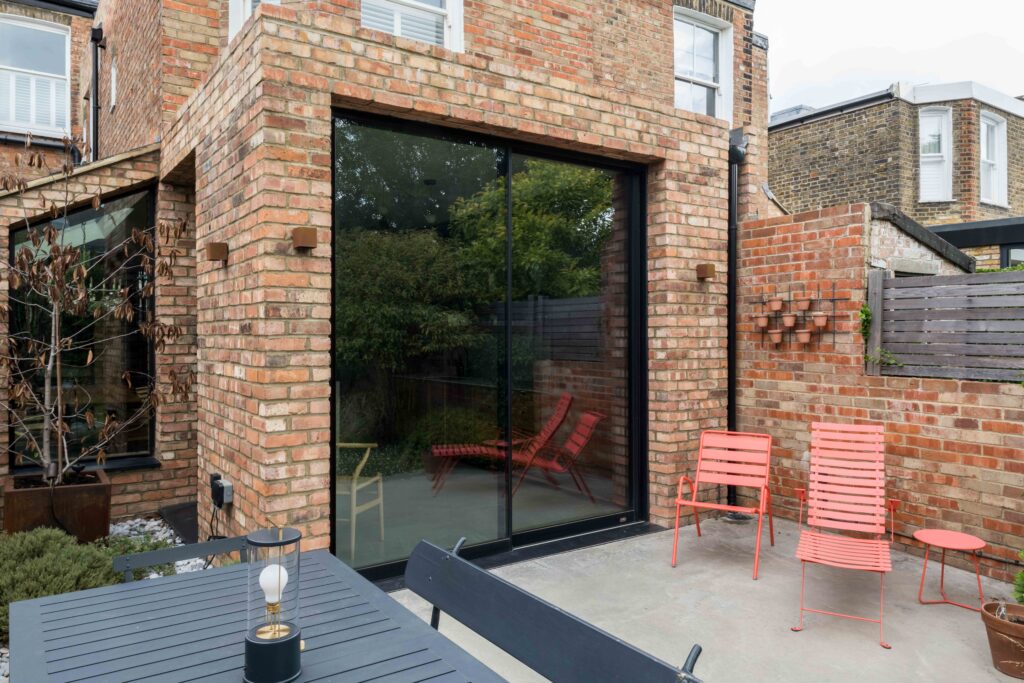
2. The Classic Victorian Single-Storey Rear Extension:
The Victorian home, with its distinctive style and old-world charm, offers homeowners a canvas rich in history and elegance. However, as modern living and family needs evolve, many are seeking ways to enhance their space without sacrificing the architectural integrity of their homes. One such solution, which has seen a surge in popularity in recent years, is the single-storey rear extension.
- Understanding the Appeal:
- A primary lure of the single-storey rear extension is its ability to augment functional space without drastically altering the home’s façade. Most Victorian homes feature generous gardens at the rear, making it a viable option for homeowners to expand without encroaching on the original structure’s view of the street.
- The Allure of Openness:
- One of the standout features of this extension is the provision for a spacious kitchen. Modern homeowners often gravitate towards an open-plan kitchen and dining area, which becomes the heart of the home. Here, families can cook, dine, and socialise in a singular, cohesive space that overlooks the rear garden.
- Illuminating Design:
- A hallmark of these extensions is their emphasis on light. By incorporating glazed doors that lead directly to the garden, there’s an immediate connection between the indoors and outdoors. Furthermore, strategically placed rooflights, flood the space with natural sunlight during the day, and at night, they can offer glimpses of the moon on a clear night.
- Design Flexibility:
- When embarking on such a project, homeowners face the delightful dilemma of choosing between design continuity or a stark contrast. For those keen on maintaining the vintage allure, materials like red brick or reclaimed tiles can seamlessly integrate the extension with the existing structure. On the other hand, those desiring a more contemporary style might opt for sleek glass facades or eco-friendly, low-carbon materials, offering a juxtaposition of the old with the new.
- Environmental and Aesthetic Balance:
- Modern construction materials not only offer aesthetic appeal but can also cater to today’s eco-conscious homeowner. Low-carbon materials and sustainable building techniques ensure that while the extension looks striking, it also treads lightly on the environment.
- Enhancing Garden Interplay:
- Given the proximity to the garden, this extension allows homeowners to get creative with outdoor spaces. Be it a patio, a decked area for al fresco dining, or terraced landscaping, there’s an opportunity to create a seamless flow from the indoor to the outdoor.
In summary, the Victorian single-storey rear extension is more than just an addition to one’s home. It’s a harmonious blend of history and modernity, functional space and aesthetics, indoors and outdoors. Whether one opts for a design that aligns with the history of the house or one that boldly claims its place in the present, this extension promises to enrich the Victorian dwelling experience.
3. Elevating the Elegance: The Double-Storey Rear Extension:
The allure of Victorian homes is often encapsulated by their detailed craftsmanship and rich history. However, with growing families and evolving needs, space can become a precious commodity. The double-storey rear extension emerges as an eloquent answer to such challenges, delivering not just more room, but also a canvas for architectural innovation.
- Delving into the Double-Storey Appeal:
- The intrinsic value of a double-storey extension lies in its sheer volume. Where a single-storey may offer a generously spaced kitchen or living area, a two-storey variant adds the luxury of additional bedrooms, bathrooms, or even a study. This adaptability makes it a top choice for homeowners looking to amplify their space without relocating.
- Preserving the Frontage:
- Much like its single-storey counterpart, the double-storey extension focuses on the rear, ensuring the iconic Victorian facade remains untouched. This is particularly beneficial for homes within conservation areas, where preserving the historical aesthetic is not just preferred but often mandatory.
- Design Dichotomy:
- The world of double-storey extensions is rife with design possibilities. The avant-garde enthusiast might lean towards steel frames, large glass panes, and minimalist aesthetics, juxtaposing the old with the ultra-modern. Alternatively, the purist might choose to extend the Victorian narrative, employing reclaimed bricks, ornate window frames, and period-specific detailing to ensure a seamless integration.
- Navigating the Planning Labyrinth:
- With larger extensions come greater responsibilities. Especially in regions with houses that are locally listed or in designated conservation areas, planning permissions can be intricate. Here’s where the invaluable expertise of a professional architect comes into play. Not only can they guide homeowners through the bureaucratic maze, but their experience can also preempt potential design pitfalls, ensuring smoother project execution.
- Conservation Considerations:
- In areas where historical preservation is paramount, the challenge is twofold: aligning with regulations and retaining the home’s character. A seasoned architect will be well-versed in striking this balance, ensuring that the extension, while modern in its functionality, pays homage to its Victorian roots.
- Embracing the Environment:
- Beyond aesthetics and functionality, the modern homeowner often seeks sustainability. With newer materials and construction methodologies, double-storey extensions can be energy-efficient and environmentally friendly, reducing carbon footprints without compromising on style.
- The Financial Factor:
- While a two-storey extension invariably represents a larger investment than a single-storey alternative, it’s crucial to view this in terms of long-term gains. Not only does it significantly enhance living space, but it can also substantially elevate property value, offering a favourable return on investment when done right.
In conclusion, the double-storey rear extension is a testament to architectural evolution within the Victorian home framework. It’s an ode to the past while embracing the needs of the present. With the right guidance, homeowners can elevate their living experience, blending history, luxury, and modernity in a harmonious architectural symphony.
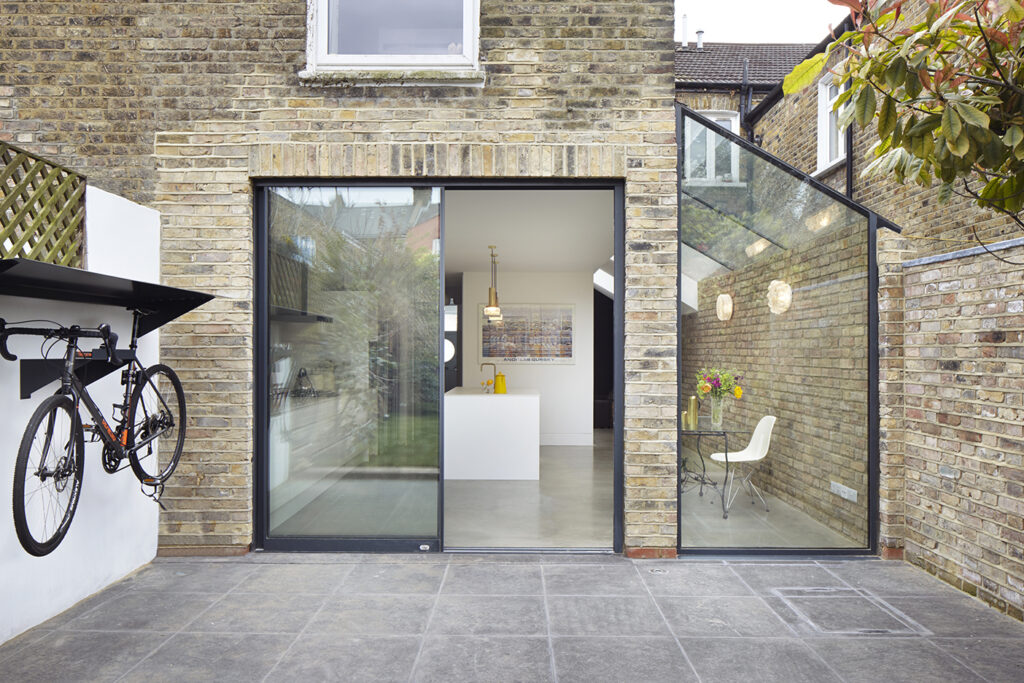
4. Capitalising on the Side Potential: The Side Return Extension
The Victorian era, though renowned for its aesthetic grandeur, also left us with a legacy of architectural quirks. Among them is the side return – a narrow strip of outdoor space adjacent to the ground floor, often underused or sometimes relegated to a mere passage. However, as urban living demands continue to evolve, the side return is increasingly being recognised for its untapped potential, offering homeowners a unique opportunity to add both space and value.
- The Underestimated Side Return:
- Traditionally, this elongated space was a residual design feature, separating the main house from the boundary wall and leading towards the rear garden. Its slender dimensions might seem restrictive, but with the right architectural insight, it holds transformative possibilities.
- The Architectural Vision:
- Reimagining the side return requires an innovative mind. It’s not merely about adding square footage but about reshaping the very dynamics of the ground floor. By bridging the gap between the existing structure and the boundary, homeowners can seamlessly weave together old and new spaces.
- The Functional Facelift:
- One of the most popular implementations of the side return extension is to expand existing spaces like kitchens. Imagine a previously cramped kitchen now flowing effortlessly into a spacious, light-filled area, complete with a dining nook or a cosy sitting area. But the potential doesn’t end there; these extensions can pave the way for a dedicated utility or a home office, a hobby room, or even a workshop for the creatively inclined.
- Fusing Design Elements:
- Given its positioning, a side return extension offers an interesting design challenge. On one hand, it’s an appendage to the original structure, and on the other, it interfaces with the garden or outdoor space. This unique position means homeowners can experiment with glazed panels, sliding doors or skylights, ensuring a synergy between the indoors and outdoors, while flooding the new space with natural light.
- Planning and Permissions:
- Much like other extensions, the side return project necessitates navigating the intricacies of local planning permissions. It’s crucial, particularly in conservation areas or listed buildings, to ensure the new addition respects architectural guidelines while enhancing the property’s overall aesthetic.
- Economical and Efficient:
- Capitalising on the side return often represents a more economical way to add space compared to more significant rear or loft extensions. Being smaller, it can be quicker to construct, yet its impact on the property’s usability and value can be profound.
- Green Opportunities:
- Modern construction techniques and sustainable materials can turn the side return extension into a beacon of energy efficiency. Incorporating features like green roofs, rainwater harvesting, and optimal insulation can make the space both functional and low-energy.
- A Seamless Transition:
- A well-executed side return extension not only augments space but ensures continuity. It’s a delicate balance to strike – honouring the Victorian heritage while infusing modern design elements, creating a space that feels both timeless and contemporary.
In summary, the side return, while seemingly modest, can redefine a home’s spatial narrative. With meticulous planning, a touch of creativity, and an understanding of the home’s historical context, this overlooked space can be transformed into one of the property’s most cherished assets.
5. Two-Storeys to the Side – Dream Bigger:
When it comes to extending your home, the possibilities are limited only by your imagination and, of course, local regulations. While single-storey extensions can undoubtedly be transformative, they might leave you craving for even more space. That’s where the double-storey side extension comes into play, offering you the opportunity to dream bigger and truly revolutionise your living space. This chapter explores the myriad possibilities that a two-storey side extension presents, and why it’s essential to collaborate with a sustainable architect for a project of this magnitude.
Expanding Your Horizons:
The allure of a double-storey side extension lies in its potential to bring about significant change to your home. Whether you want to enlarge your kitchen, create an additional bedroom, or craft a spacious home office, the possibilities are vast. This level of expansion is particularly advantageous for detached or semi-detached houses, where there is often room to grow without compromising on your outdoor space.
Navigating Boundaries and Considerations:
Before you embark on your two-storey extension journey, there are crucial considerations to bear in mind. Boundary lines and neighbourhood considerations play pivotal roles in the success of your project. These considerations are not only a matter of legal compliance but also a matter of being a considerate neighbour.
Discussing with Neighbors:
One of the first steps in planning your double-storey side extension should be engaging in discussions with your neighbours. Open and transparent communication can go a long way in maintaining good relations throughout the construction process. Sharing your plans and intentions with your neighbours can help address any concerns they may have, and it’s an opportunity to foster a sense of community. It’s also worth considering any potential disruptions to their lives during the construction phase and being willing to find solutions that benefit both parties.
The Role of Sustainable Architects:
When undertaking a project of this scale, it’s crucial to enlist the expertise of a sustainable architect. Sustainable architects are professionals who are well-versed in environmentally friendly building practices, energy efficiency, and the use of sustainable materials. Their input can help ensure that your extension not only meets your aesthetic and functional requirements but also aligns with modern sustainability standards.
Sustainable architects can assist you in various ways:
- Energy Efficiency: They can design your extension to maximise natural light and ventilation, reducing your reliance on artificial lighting and heating or cooling systems.
- Material Selection: Sustainable architects can recommend eco-friendly materials that have lower environmental impact and longer lifespans, contributing to the longevity of your home.
- Green Technology: They can integrate renewable energy sources like solar panels or heat pumps, reducing your carbon footprint and energy bills.
- Local Regulations: Sustainable architects are well-versed in local building regulations related to sustainability. They can ensure your project complies with these standards.
- Cost Efficiency: While sustainability can have an initial cost, it often pays off in the long run through reduced utility bills and increased property value. Experienced architects can help you make informed decisions that balance upfront costs with long-term benefits.
In conclusion, a two-storey side extension represents a significant opportunity to enhance your living space and increase the value of your property. However, it’s essential to approach this project with careful planning, neighbourly consideration, and the expertise of a sustainable architect to create a space that not only meets your needs but also contributes to a more sustainable future. Dream bigger, but do it responsibly and sustainably with the guidance of professionals who understand the importance of harmonising modern living with environmental consciousness.
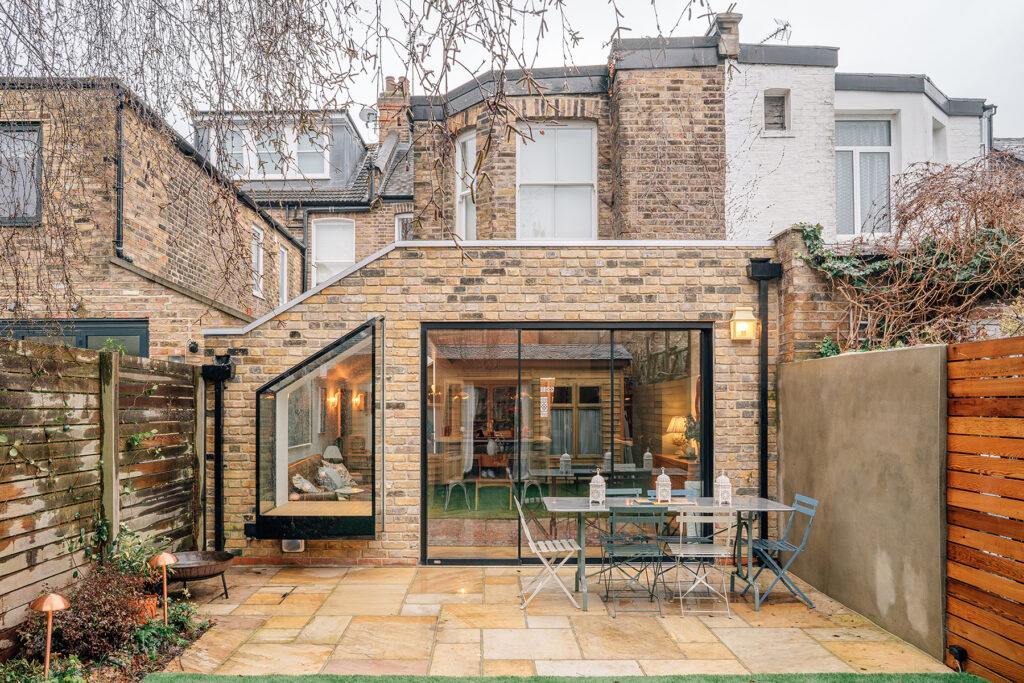
6. Wraparound Extensions:
If you’re seeking to elevate your home to a new level of magnificence and functionality, the concept of wraparound extensions should undoubtedly be on your radar. By extending two adjoining sides of your house, you can gift your home with added space and charm that seamlessly blends indoor and outdoor living. In this chapter, we explore the wonders of wraparound extensions, emphasising their capacity to enhance your living space and energy efficiency through the expertise of a sustainable architect.
The Magic of Wraparound Extensions:
Wraparound extensions take the concept of home expansion to a whole new level. They involve extending both a side of your house and the rear simultaneously, creating a continuous flow of space that adds substantial square footage to your living area. One of the significant advantages of a wraparound extension is that it can provide the illusion of a much larger home without compromising your garden access.
Seamless Indoor-Outdoor Living:
One of the most enchanting aspects of wraparound extensions is their ability to seamlessly connect your indoor and outdoor spaces. These extensions often feature large, strategically placed windows and sliding glass doors that flood your living area with natural light and offer breathtaking views of your garden. This harmony between indoor and outdoor living not only enhances your quality of life but also adds to the overall appeal of your home.
The Sustainable Edge:
Now, let’s talk about the sustainable aspect of wraparound extensions. To make your project truly remarkable and eco-friendly, it’s crucial to collaborate with a sustainable architect. Here’s how their expertise can make a difference:
- Energy Efficiency: Sustainable architects are well-versed in designing spaces that maximise energy efficiency. They can incorporate passive solar design principles, ensuring that your home captures and retains heat during the winter while staying cool in the summer. This reduces your reliance on heating and cooling systems, which are not only environmentally friendly but also save you money on energy bills.
- Green Materials: These professionals are knowledgeable about sustainable building materials. They can guide you in selecting eco-friendly options that have minimal environmental impact, are durable, and contribute to a healthier indoor environment.
- Renewable Energy Integration: Sustainable architects can design your wraparound extension to accommodate renewable energy sources such as solar panels or wind turbines. This not only reduces your carbon footprint but can also lead to energy cost savings in the long term.
- Water Management: They can help you implement rainwater harvesting systems and sustainable landscaping practices, ensuring that your garden remains lush and green without excessive water usage.
- Local Regulations: Sustainable architects are well-versed in local building regulations related to sustainability. They can ensure that your wraparound extension complies with these standards, avoiding any potential legal issues.
In conclusion, wraparound extensions offer a unique opportunity to transform your home, both aesthetically and functionally. By collaborating with an experienced sustainable architect, you can take your project to the next level by prioritising energy efficiency, eco-friendly materials, and sustainable design principles. As you gift your home with added magnificence and space, you can also gift the planet with a more sustainable and environmentally conscious living space.

7. Modern Interiors within Victorian Walls:
When it comes to revamping the interiors of a Victorian-era home, the task may seem daunting. You may wonder how to infuse modern comfort and convenience without forsaking the timeless charm that Victorian architecture exudes. In this chapter, we delve into the art of merging modern interiors within those beautifully aged Victorian walls. We’ll explore how to seamlessly integrate modern technology, blend Victorian details with contemporary elements, and craft a unique and harmonious style that epitomises modern Victorian design.
Preserving Victorian Charm:
The allure of Victorian homes lies in their historical charm, characterised by intricate mouldings, ornate fireplaces, and high ceilings. The first rule of modernising these interiors is to respect and preserve the essence of the Victorian era. This means carefully restoring and maintaining original features while incorporating modern elements that complement rather than clash with the heritage of the space.
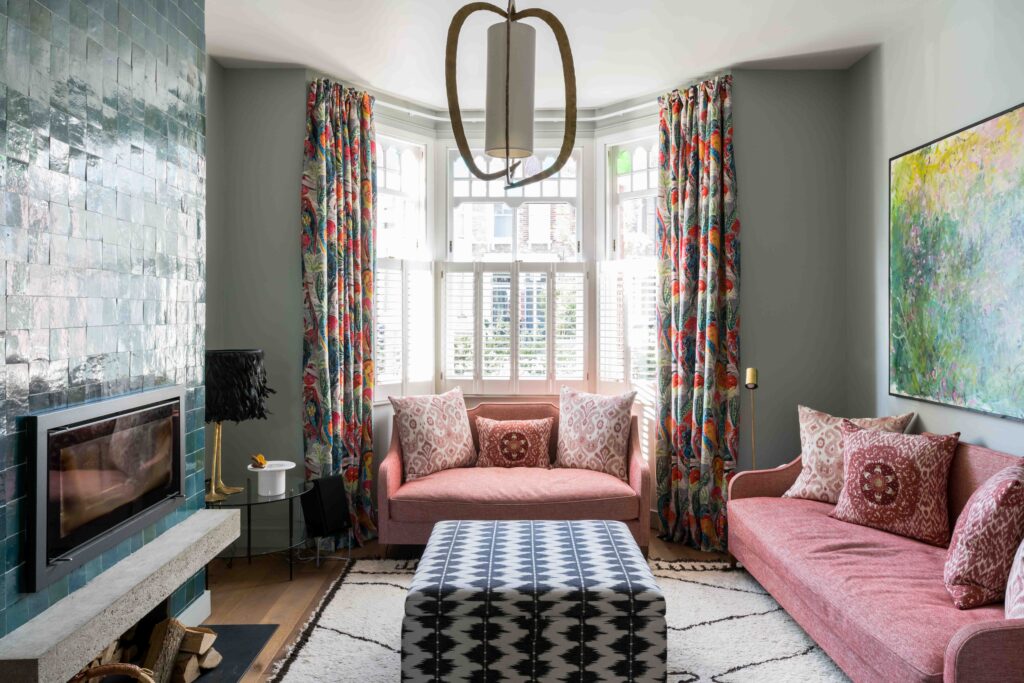
A Symphony of Technology and Tradition:
Modern technology has become an integral part of our lives, and integrating it into a Victorian home may initially seem like a challenge. However, it can be done with finesse. Consider installing discreet smart home systems that allow you to control lighting, heating, and security without disrupting the Victorian aesthetics. Concealed wiring and technology hubs can keep the charm intact while providing modern convenience at your fingertips.
Blending Victorian and Contemporary:
The heart of modern Victorian design lies in the successful marriage of two seemingly contrasting styles. Victorian details, such as decorative cornices and intricate wall panels, can be paired with contemporary furnishings, creating a captivating visual contrast. For example, a sleek, minimalist sofa can coexist harmoniously with an ornate Victorian coffee table, resulting in a space that tells a story of both past and present.
Muted Palettes to Avant-Garde Furnishings:
Modern Victorian interiors are versatile and can cater to a wide range of design preferences. Whether you prefer a muted and understated palette that accentuates the elegance of the Victorian architecture or you’re drawn to bold, avant-garde furnishings that make a statement, Victorian homes offer a canvas for your creative vision.
The Lofty Spaces Advantage:
Victorian homes often boast lofty spaces, with high ceilings and generously sized rooms. These spacious interiors provide a perfect backdrop for modern design concepts. You can experiment with open-plan layouts, large windows that invite natural light, and innovative storage solutions that make the most of the generous room dimensions.
Bringing It All Together:
In essence, modernising the interiors of a Victorian home is about striking a delicate balance between preserving history and embracing progress. It’s about making technology work for you while retaining the elegance of the past. It’s about merging Victorian opulence with contemporary functionality to create a space that’s uniquely yours.
Remember that there’s no one-size-fits-all approach to modern Victorian design. Your home should reflect your personal style and preferences. Whether you lean towards a fusion of old and new or a seamless blend of Victorian and contemporary, the possibilities are as endless as your imagination.
So, whether you’re drawn to the muted palettes that showcase the Victorian charm or you want to experiment with avant-garde furnishings that add a modern twist, the lofty spaces of Victorian homes stand ready to accommodate a myriad of modern design concepts. Embrace the best of both worlds, and let your modern Victorian interior be a testament to the timeless beauty of design evolution.

8. Financial Considerations: Budgeting for Your Dream Extension:
Undertaking a refurbishment or extension project is an exciting venture that can significantly enhance your living space and property value. However, it’s important to approach this endeavour with careful financial planning to ensure that your dream extension doesn’t turn into a financial nightmare. In this chapter, we will explore the key financial considerations involved in budgeting for your dream extension, from understanding potential costs to leveraging valuable resources like online build cost calculators and local insights.
Understanding the Scale of Investment:
The cost of refurbishing and extending your home can vary widely based on several factors, including the scale of the project, the materials used, and the location of your property. Small-scale renovations may start at around £35,000, while larger, more ambitious projects can range from £150,000 to £375,000 or more. Understanding the scale of your investment is the first step in creating a realistic budget.
Local Labour Costs and Material Prices:
Local labour costs and material prices are crucial determinants of your project’s budget. Labour costs can vary significantly from one region to another, and it’s essential to obtain quotes from reputable local contractors to gauge the costs accurately. Additionally, the choice of materials, fixtures, and finishes will impact your budget. Research local suppliers and prices to make informed decisions about the materials you want to use in your extension.
Accurate and Up-to-Date Information:
To avoid unpleasant financial surprises during your project, it’s vital to gather accurate and up-to-date information about construction costs in your area. Keep in mind that these costs can fluctuate over time due to factors such as inflation, changes in building regulations, or shifts in the availability of materials and labour. Staying informed about these changes will help you maintain control over your budget.
The Role of Budgeting:
Budgeting is the cornerstone of any successful home renovation or extension project. Start by creating a detailed budget that outlines all anticipated expenses, including construction costs, permissions, design fees, and contingency funds for unexpected costs that may arise. Be sure to set aside a portion of your budget for professional fees, such as architects and consultants, as their expertise is invaluable in ensuring a smooth project.
Leveraging Online Build Cost Calculators:
In the digital age, there are valuable online resources available to homeowners planning construction projects. Online build cost calculators can help you estimate the cost of your extension based on factors like location, size, and the level of finish you desire. While these tools provide rough estimates, they can serve as useful starting points for your budgeting process.
Local Insights and Recommendations:
Don’t underestimate the power of local insights and recommendations. Consult with friends, family, or neighbours who have undertaken similar projects in your area. They can provide valuable advice on contractors, suppliers, and potential cost-saving measures. Local experts, such as architects and builders, can also offer insights tailored to your specific location and project requirements.
Contingency Planning:
Even with meticulous planning, it’s wise to set aside a contingency fund of around 10% to 20% of your total budget. This buffer can cover unexpected expenses, such as structural issues discovered during construction or design changes that arise along the way. Having a contingency fund in place ensures that you can navigate unforeseen challenges without derailing your project or stretching your finances beyond comfort.
In conclusion, budgeting for your dream extension is a critical aspect of turning your vision into reality. By understanding the potential costs, researching local prices, and leveraging online tools and local insights, you can create a realistic budget that aligns with your goals and helps you achieve your dream renovation or extension without financial stress. Careful financial planning is the key to ensuring that your project becomes a cherished addition to your home and not a source of financial stress.
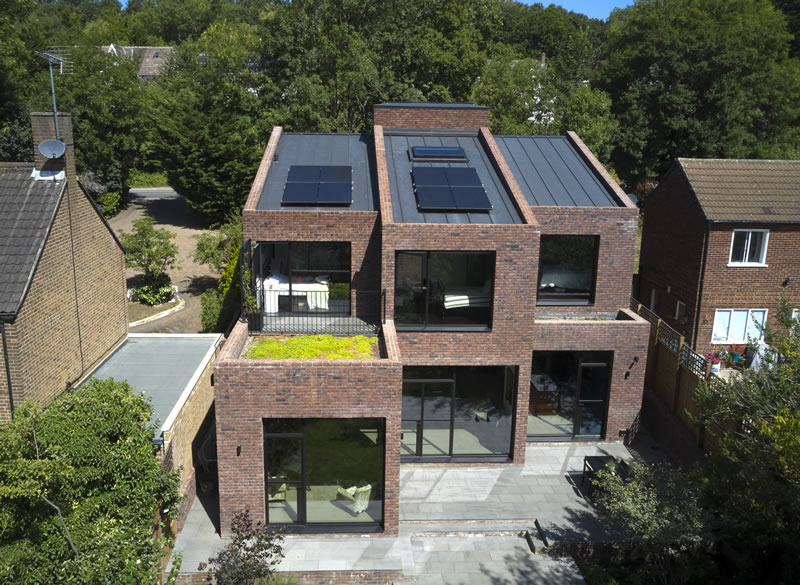
9. Emphasising Sustainability and Low Carbon Footprints:
In today’s world, where climate change is a pressing global concern, every choice we make, including how we approach home renovations and extensions, holds significance. Embracing sustainability and minimising carbon footprints isn’t just an architectural trend; it’s a moral and environmental imperative. In this chapter, we’ll explore the importance of sustainability in your dream extension project, from selecting eco-friendly materials to collaborating with sustainable architects, and how these choices reflect forward-thinking and responsibility towards the planet.
The Urgency of Sustainability:
Climate change is a formidable challenge that demands collective action. The built environment, including homes and extensions, plays a substantial role in carbon emissions. Therefore, choosing to embark on a sustainable extension project is a meaningful step towards reducing your carbon footprint and mitigating the impact of climate change.
Low Energy and Low Embodied Carbon Designs:
Sustainable extensions prioritise low energy consumption and low embodied carbon. Low-energy designs focus on reducing the energy required for heating, cooling, and lighting, ultimately decreasing utility bills and greenhouse gas emissions. Low embodied carbon designs consider the environmental impact of the materials used, from their extraction to manufacturing and transportation. Opting for materials with lower embodied carbon contributes to a more sustainable building industry.
Eco-Friendly Material Selection:
Selecting materials with a minimal environmental footprint is a fundamental aspect of sustainable extensions. Sustainable materials can include reclaimed wood, recycled metal, low-VOC (volatile organic compound) paints or clay plaster, and sustainable wood products certified by organizations like the Forest Stewardship Council (FSC). These materials not only help preserve natural resources but also create healthier indoor environments.
Energy-Efficient Appliances and Systems:
Incorporating energy-efficient appliances and systems into your extension is another crucial step towards sustainability. High-efficiency Mechanical Ventilation & Recovery systems (like MVHR), LED lighting, and smart thermostats can significantly reduce your energy consumption and long-term operational costs. Moreover, these choices align with the growing emphasis on eco-conscious living.
The Role of Sustainable Architects:
Collaborating with sustainable architects is paramount when prioritising sustainability in your extension project. Sustainable architects are experts in designing spaces that reduce environmental impact and promote eco-friendly living. Their contributions include:
- Passive Design: Sustainable architects incorporate passive design principles that maximise natural light, ventilation, and thermal comfort, reducing the need for artificial heating or cooling.
- Renewable Energy Integration: They can design your extension to accommodate renewable energy sources such as solar panels or wind turbines, decreasing your reliance on fossil fuels.
- Material Selection: Sustainable architects recommend environmentally responsible materials that have lower embodied carbon and adhere to sustainability certifications.
- Local Regulations: They are well-versed in local building regulations related to sustainability, ensuring your project complies with these standards.
- Lifelong Sustainability: Sustainable architects design for the long term, creating spaces that are adaptable and can evolve with changing needs, reducing the need for future renovations.
In conclusion, emphasising sustainability and reducing carbon footprints in your dream extension isn’t just a matter of architectural preference; it’s a vital contribution to a more sustainable future. From eco-friendly material choices to energy-efficient systems and the expertise of sustainable architects, every decision you make during your extension project can be a testament to your commitment to forward-thinking and environmental responsibility. By embracing sustainability, you not only enhance the value and comfort of your home but also play a significant role in addressing the global climate crisis.
10. The Final Part of the Journey:
The culmination of your journey from envisioning an extension to witnessing it materialise is an intricate and deeply satisfying moment. It’s a journey filled with countless decisions, meticulous budget considerations, and a myriad of design choices. However, with the right blend of professional guidance, a commitment to sustainable practices, and a vision that embraces modern design principles, you have the potential to transform your beloved Victorian home into a contemporary masterpiece.
The Complexity of the Journey:
The process of breathing new life into your Victorian home is akin to crafting a symphony – a harmonious blend of history, aesthetics, and functionality. It involves navigating through a maze of choices, each contributing to the final opus. From architectural designs that respect the past while embracing the future to selecting materials that balance heritage and sustainability, every step is a note in the composition of your dream home.
Professional Guidance – Your North Star:
One of the fundamental keys to a successful transformation is professional guidance. Seek out architects and contractors who understand the delicate dance between Victorian charm and modern innovation. Collaborating with these experts ensures that your vision remains grounded in reality while pushing the boundaries of design and functionality.
Sustainability as a Guiding Principle:
In a world where environmental responsibility is paramount, infusing your extension project with sustainable practices is more than a choice; it’s a moral imperative. Sustainable design isn’t merely a trend; it’s a commitment to the well-being of our planet. From energy-efficient heating and cooling systems to the use of locally sourced and eco-friendly materials, your Victorian gem can evolve into a beacon of sustainability, proving that old-world elegance can coexist harmoniously with modern ecological consciousness.
The Elegance of Modern Design:
Modern design principles offer boundless opportunities to elevate your Victorian home. Open-concept living, minimalist aesthetics, and the seamless integration of technology can breathe new life into your space without overshadowing its historical character. It’s a delicate dance that requires a keen eye for balance, and when executed with finesse, it transforms your home into a contemporary masterpiece.
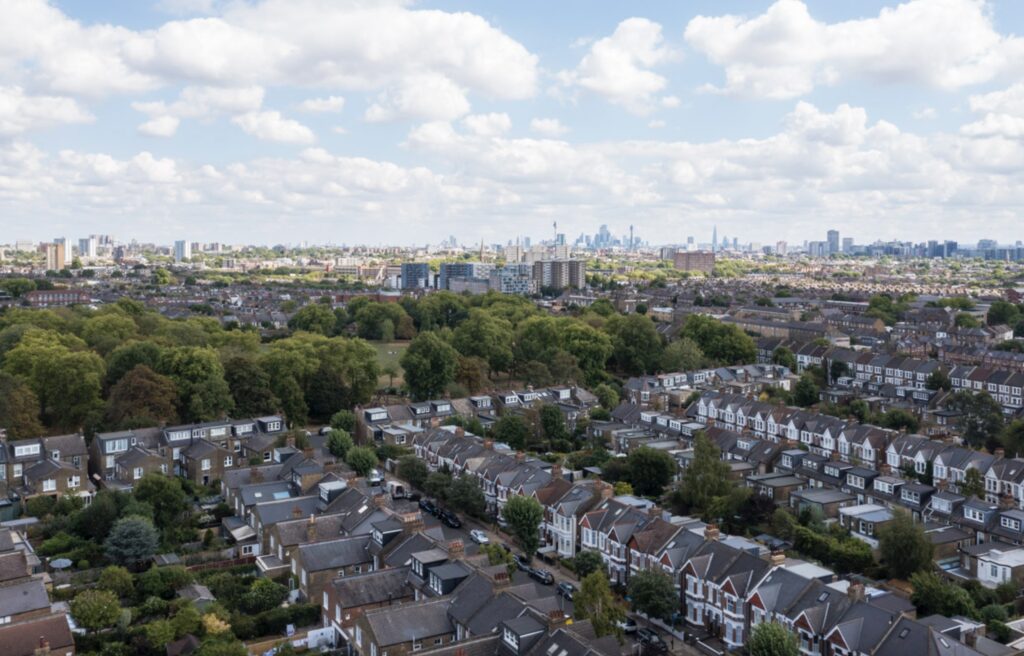
Embracing the Transformation:
The final blueprint is not just about physical plans on paper; it’s a blueprint for the future. It’s a testament to your vision, your respect for history, and your dedication to sustainability. It’s an embodiment of the journey you undertook, from the first seed of inspiration to the final part of the design. It’s a celebration of the fusion of past and present, where the elegance of Victorian architecture seamlessly intertwines with the innovations of contemporary living.
In conclusion, the transformation of your Victorian house into a contemporary masterpiece is an intricate, yet immensely rewarding, journey. It’s a journey that celebrates the past, respects the present, and paves the way for a sustainable future. With the right blend of professional guidance, sustainable practices, and modern design principles, you can achieve a remarkable synthesis of history and innovation. Your home can become a testament to your vision, a sanctuary of beauty, and a tribute to the enduring charm of Victorian architecture, all while embracing the ideals of the modern world.
How RISE Design Studio can help you
RISE Design Studio is a London-based RIBA chartered architecture practice with offices in Maida Vale. With a dedicated focus on proven design and planning strategies, and expertise in residential extensions, conversions and new build homes, we help homeowners to create somewhere they enjoy living in and landowners and developers achieve ROI-focused results.
If you would like to talk through your project with the team, please do get in touch at mail@risedesignstudio.co.uk or give us a call at 020 3290 1003
RISE Design Studio Architects company reg no: 08129708 VAT no: GB158316403 © RISE Design Studio. Trading since 2011.


